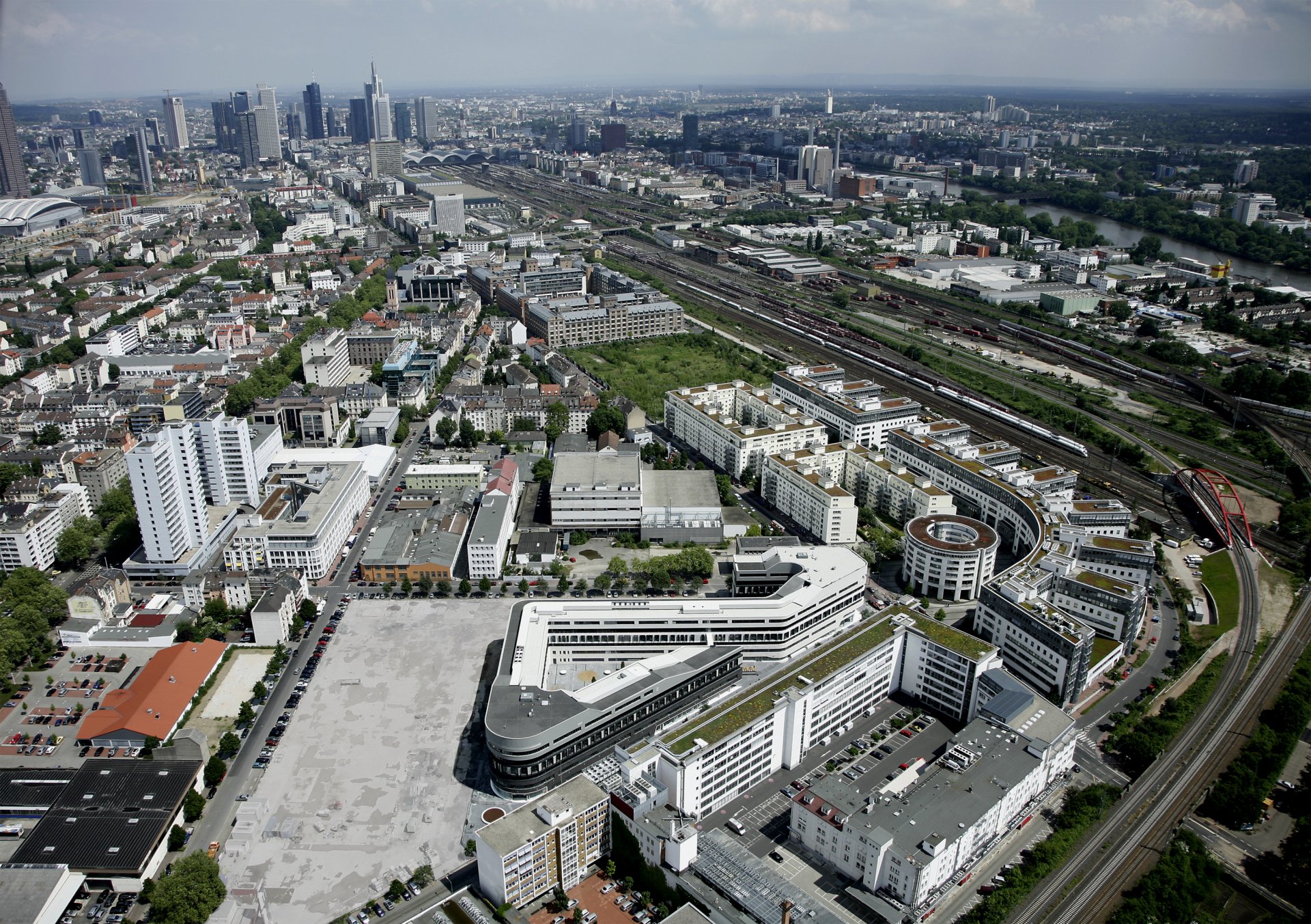
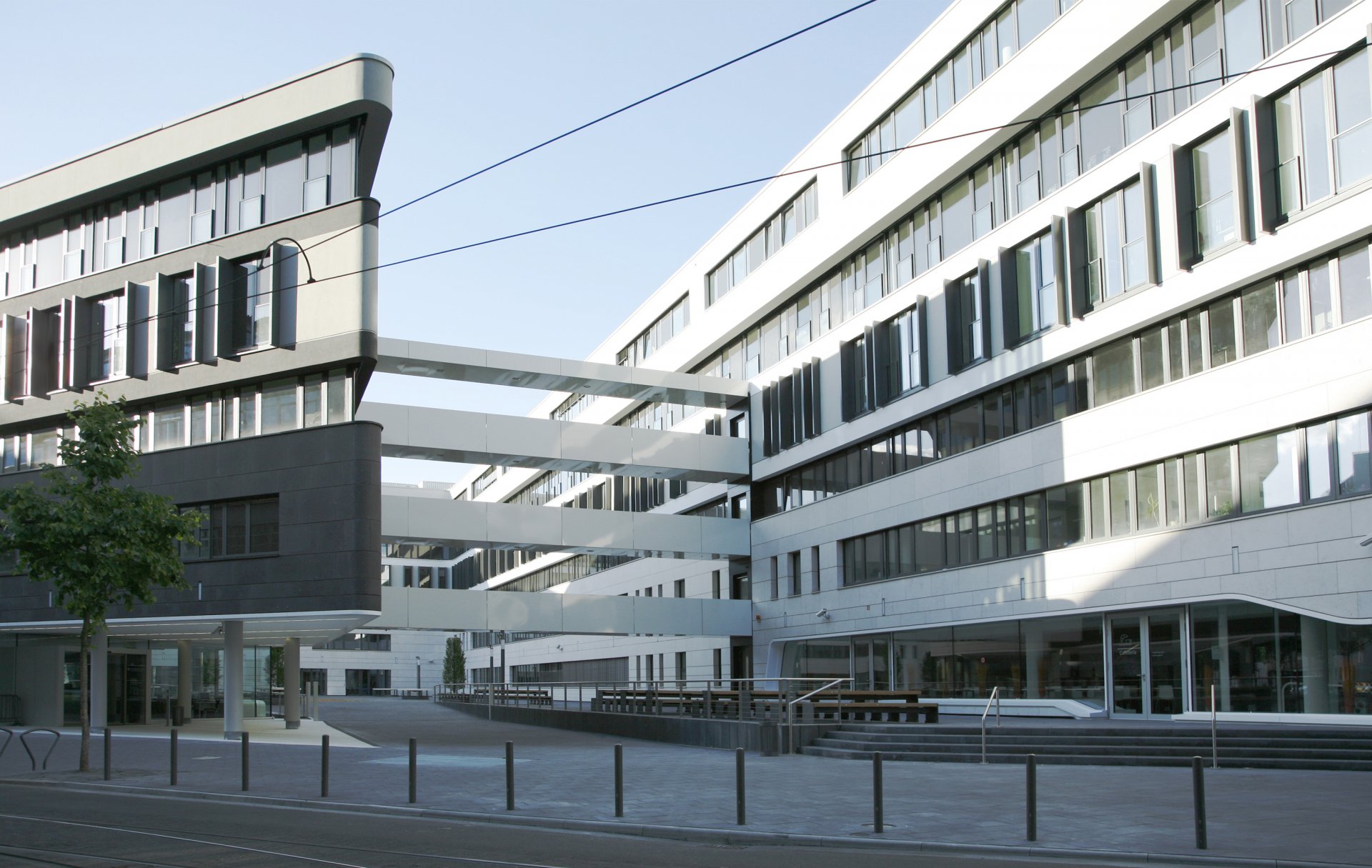
City of Frankfurt Public Order Office
Frankfurt am Main, 2009
The surroundings of the new City of Frankfurt Public Order Office in the Gallus district are defined by two existing factors: The curve of the rail tracks and the buildings to the South and West on the one hand and the orthogonal structure of the buildings to the North and East, on the other.
The design is intended to interface these two structures at this juncture and emulate the striking curve. Moreover, the location is characterized by industrial wastelands and spaces that have hardly been given planned boundaries. Another objective was thus to give the urban fabric a greater density here and establish boundaries while at the same time prioritizing an open structure as regards light and views outwards. In terms of urban planning, the new Public Order Office is construed as a special public building typology.
MoreThe inverted ribbon footprint allows for a combination of openness and dense urban space. The structure of the spiral ribbon with its unique loop on the site gives rise to a significant standalone meaning that the new Public Order Office is readily recognizable as an “open office” in line with its tasks and civic importance.
A special feature of the spatial program (alongside a few special zones within the building) is the repetition of many similar office spaces across an area of some 30,000 square meters. Attention was paid to highlighting the subtle differences between the individual functional areas and to derive from them characteristic sub-divisions of the building. The building was developed in line with a specific perception strategy.
The spiral ribbon structure means that the usual distinction of front/back, street-facing/courtyard-facing façade no longer applies. The color coding of the two sides to the building enables the street façade to transition fluidly into the courtyard facades. The façade running along Rebstöcker Strasse is, for example, differentiated to form two parts that directly address the perception of users and viewers alike.
The functions of the Public Order Office made it necessary as far as possible to subdivide the building by floor and/or stack the respective divisions/usages one on top of the other: Central facilities are on the ground floor (entrance lobbies, cafeteria, canteen); special zones are then housed above (conference zone). Various office sections such as the Aliens office or the Transportation Authorities are assigned space horizontally on the upper floors.
The structure of the building and the façade emphasizes the differentiation of function within the horizontal layers. The height of the respective story is consciously overcome by grouping several floors together or by seemingly having them disappear; in the process the visual distortion of the horizontal layers by stacking is rendered clear and tangible. The proportions and division of the façade reflect the inner structure of the building and its usage for the outside world to see. The ground floor and 1st floor treated as special layers where the public spaces such as the entrance lobbies are peeled out of the overall whole to constitute “public offices”. The generously glazed halls unfold inside into strip segments analogously to the geometry of the building’s volume; the segments include both technical facilities and usages.
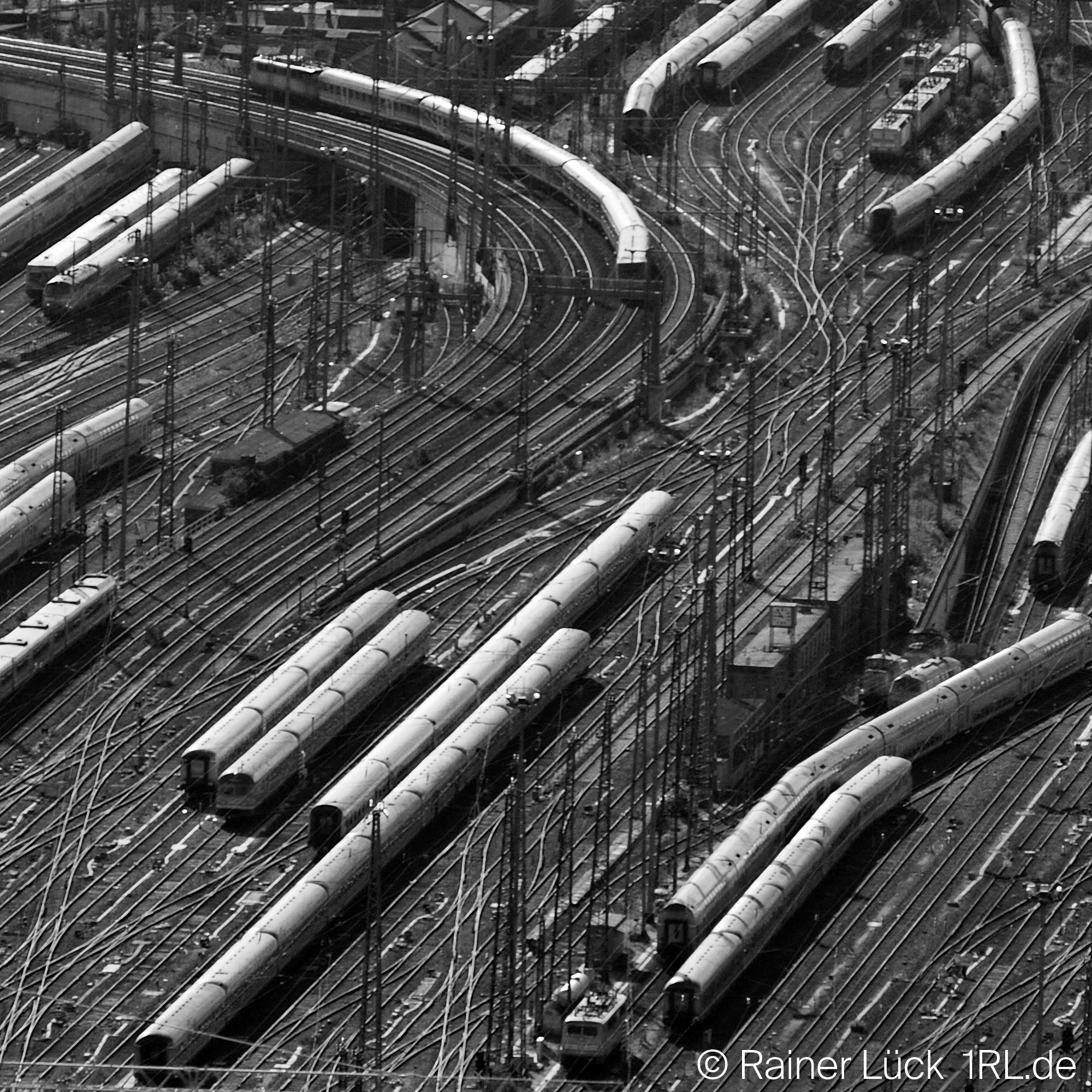
Association railway tracks
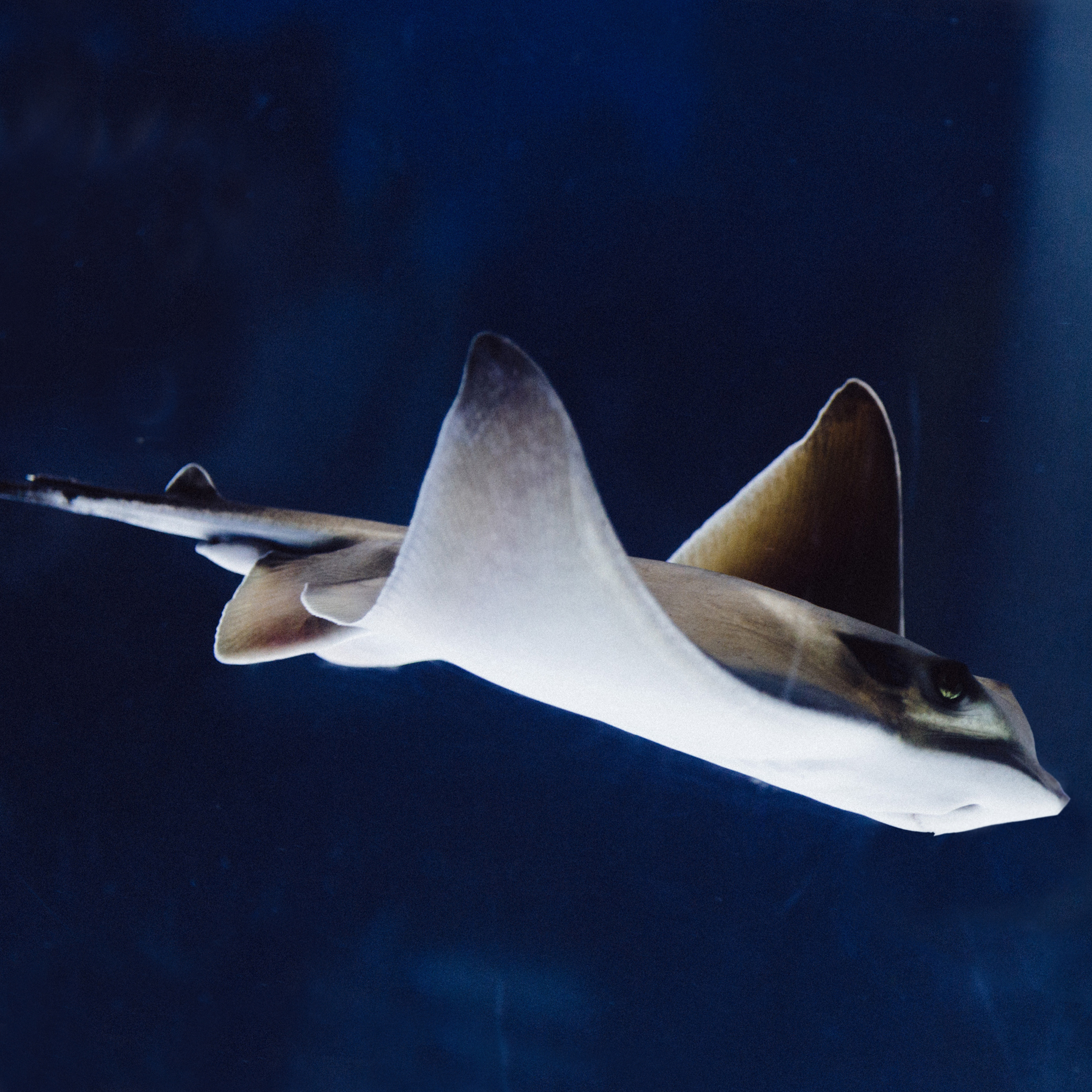
Association manta ray
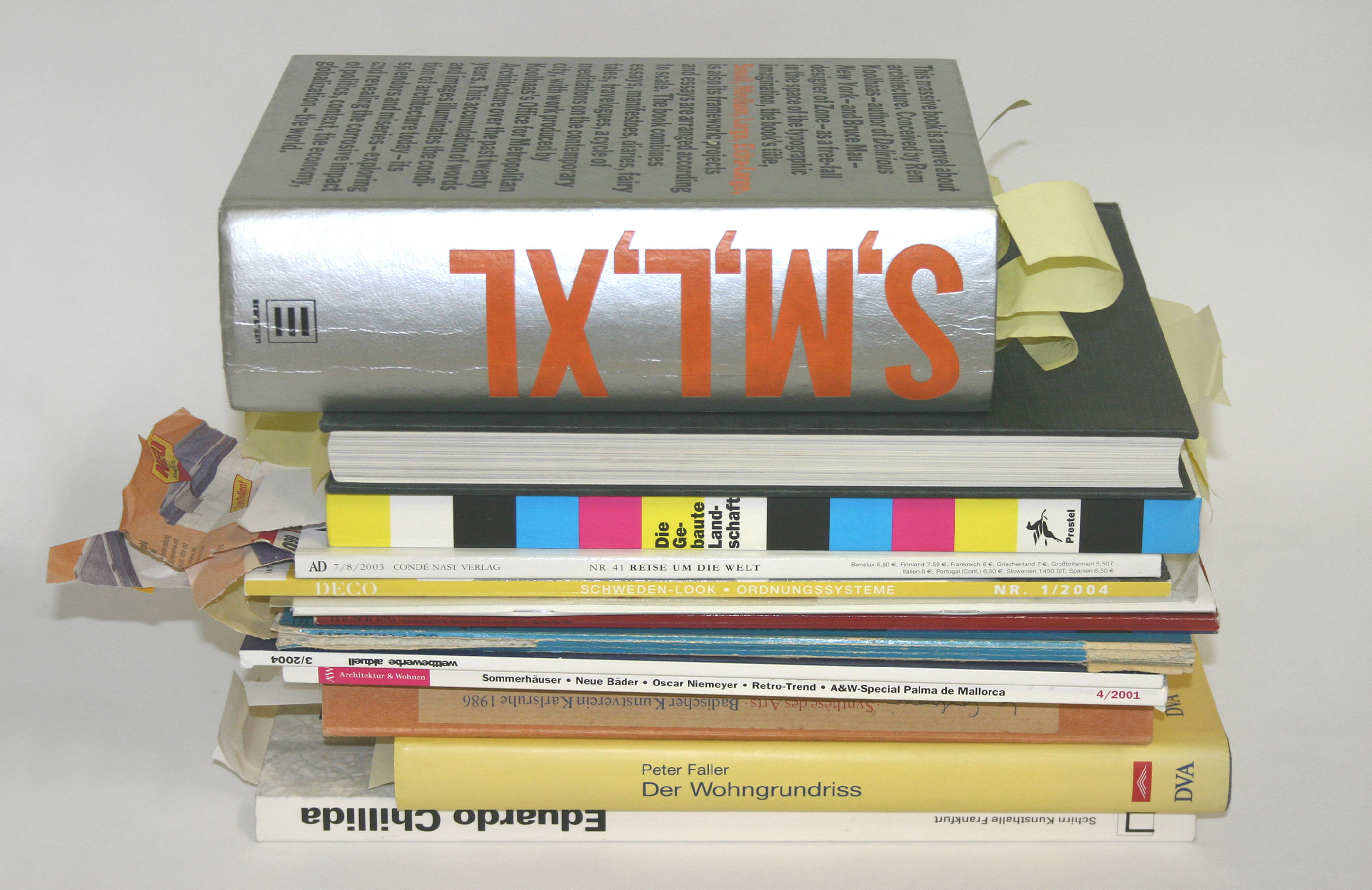
Association pile of books
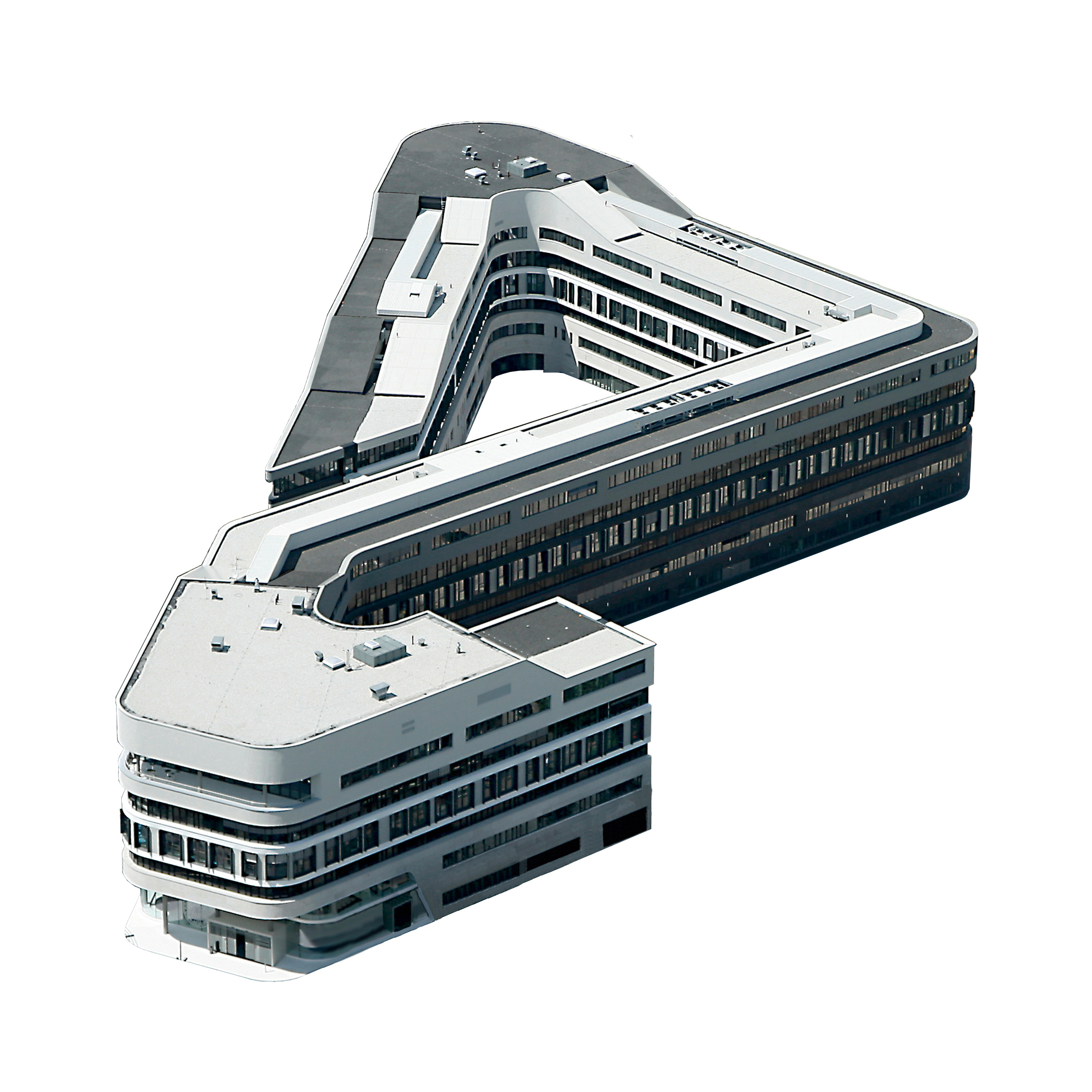
Final structure
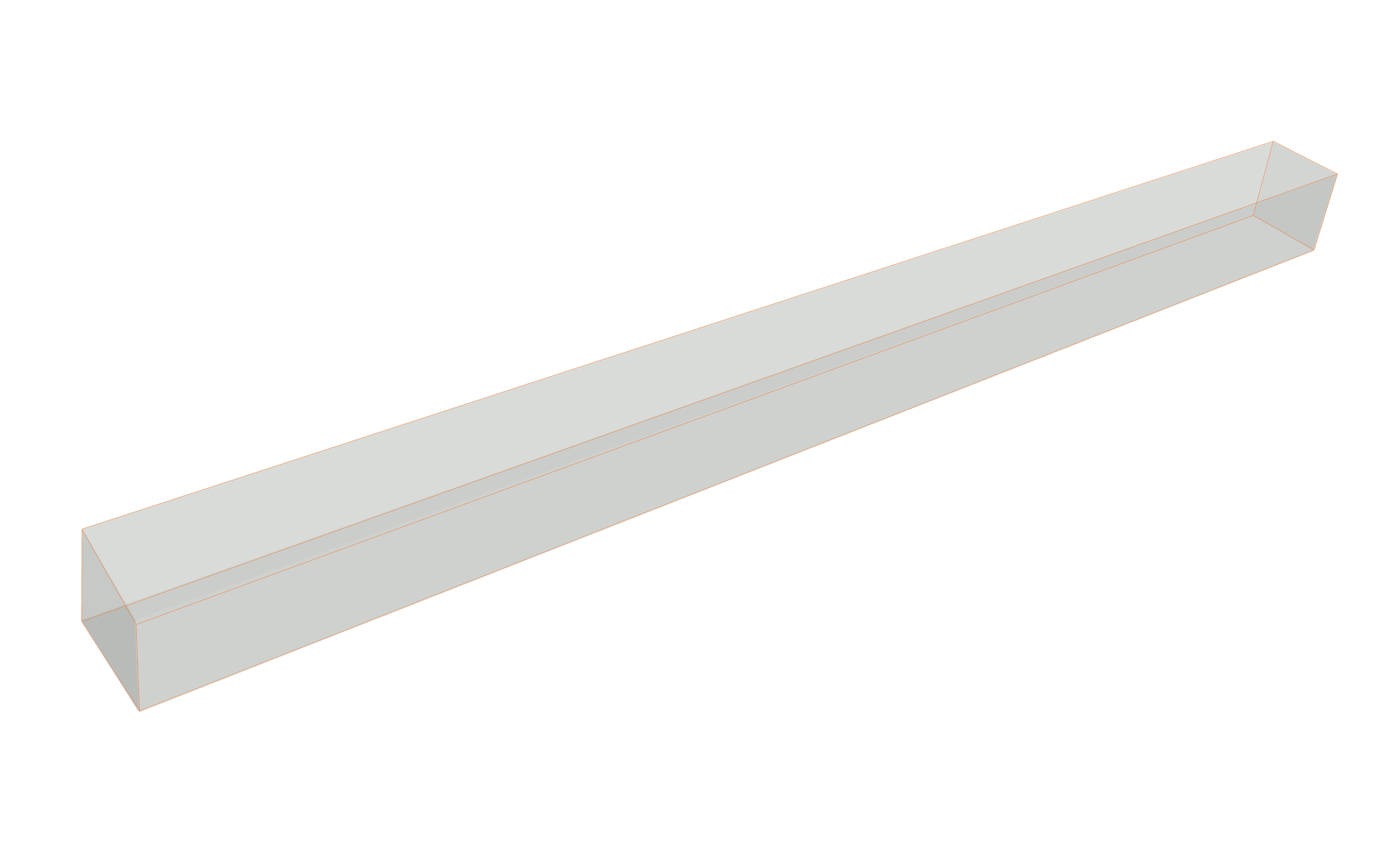
1. Room programme: Volume/ 30 000 m² gross floor area
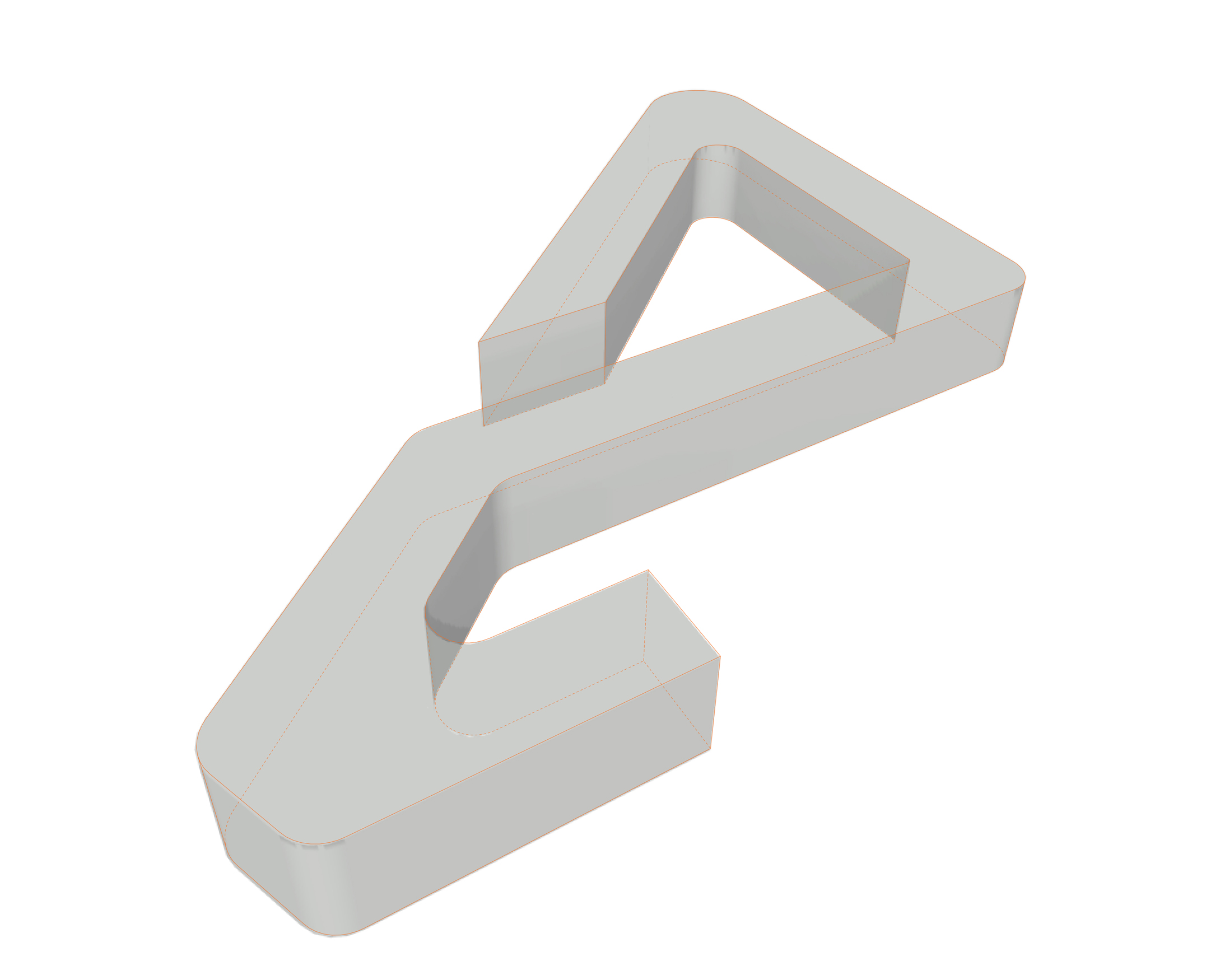
2. Spiral ribbon structure: Dense urban space, openness, appropriate significance
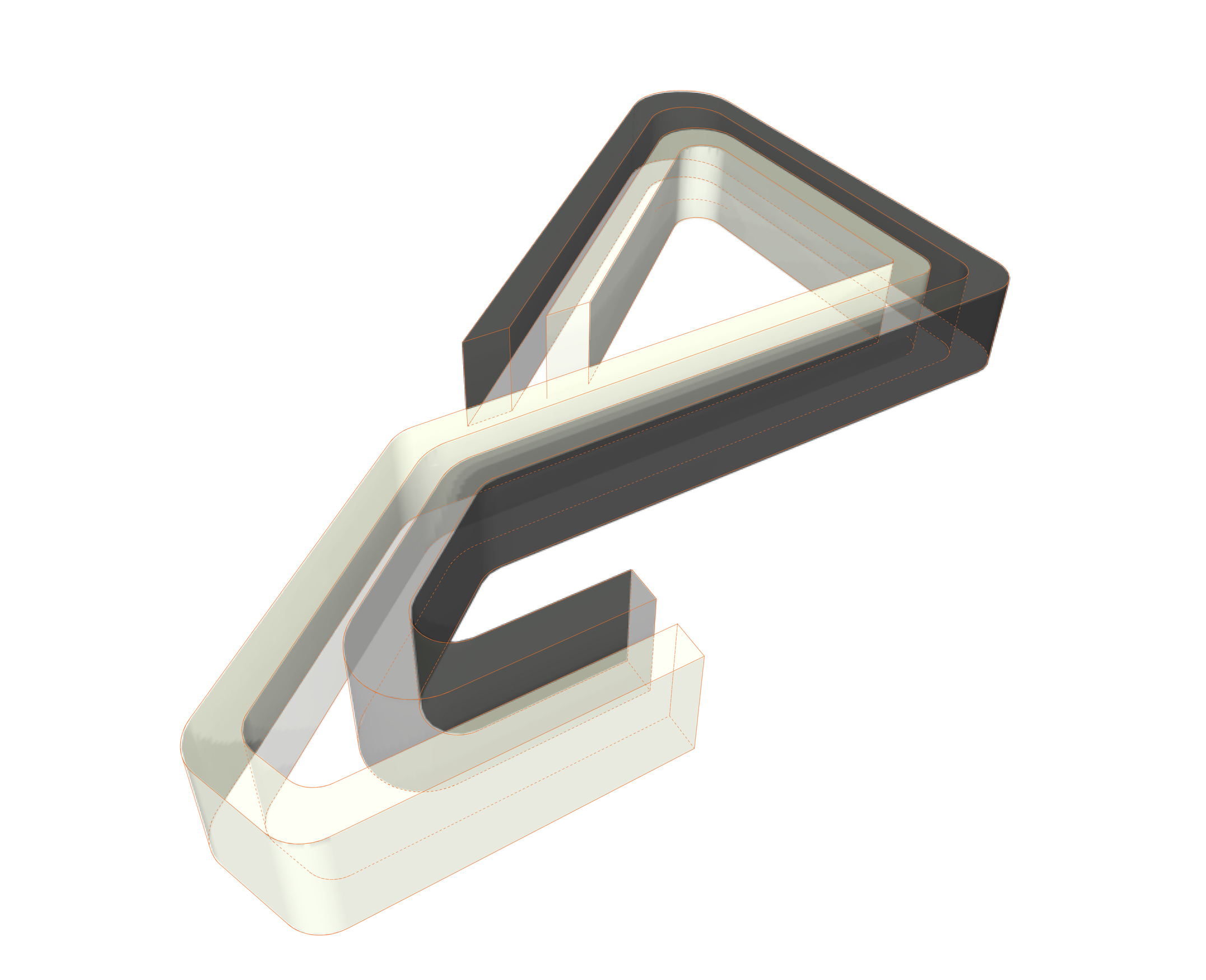
3.Vertical layering: Suspension of front/back or street-facing/courtyard-facing façade
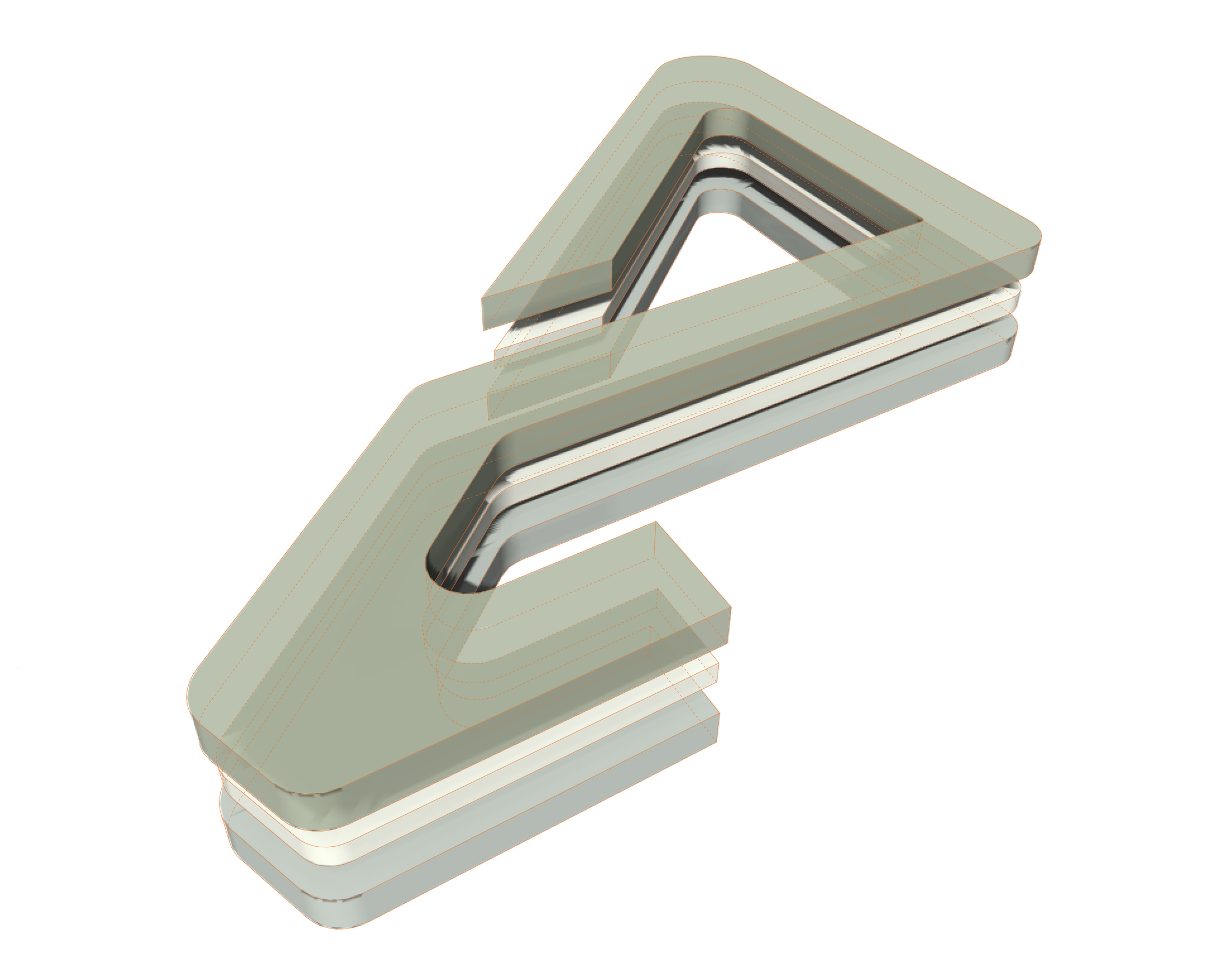
4. Horizontal layering: Layering of the functional structure, differentiation of the structure

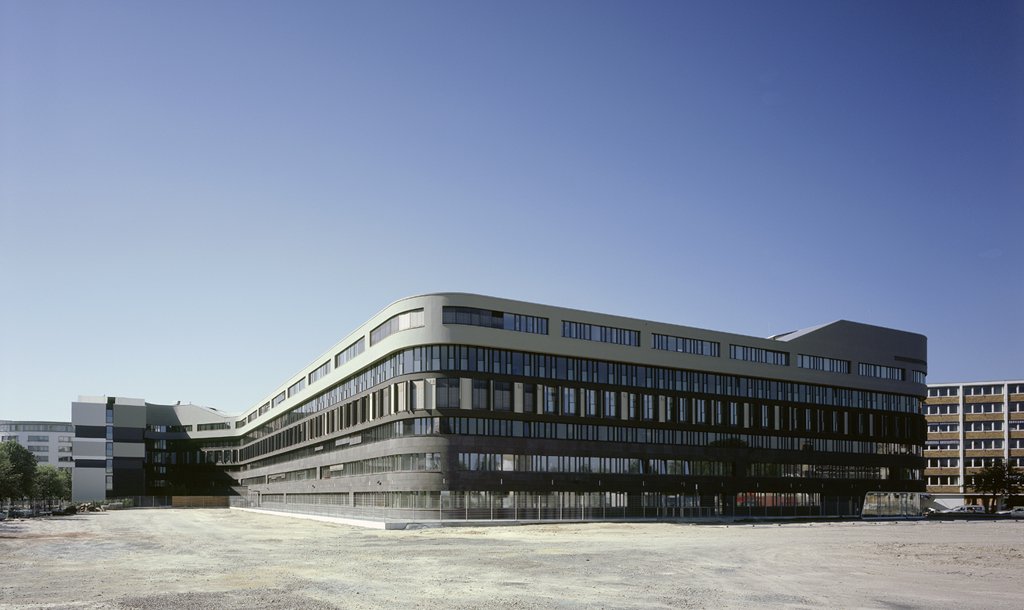
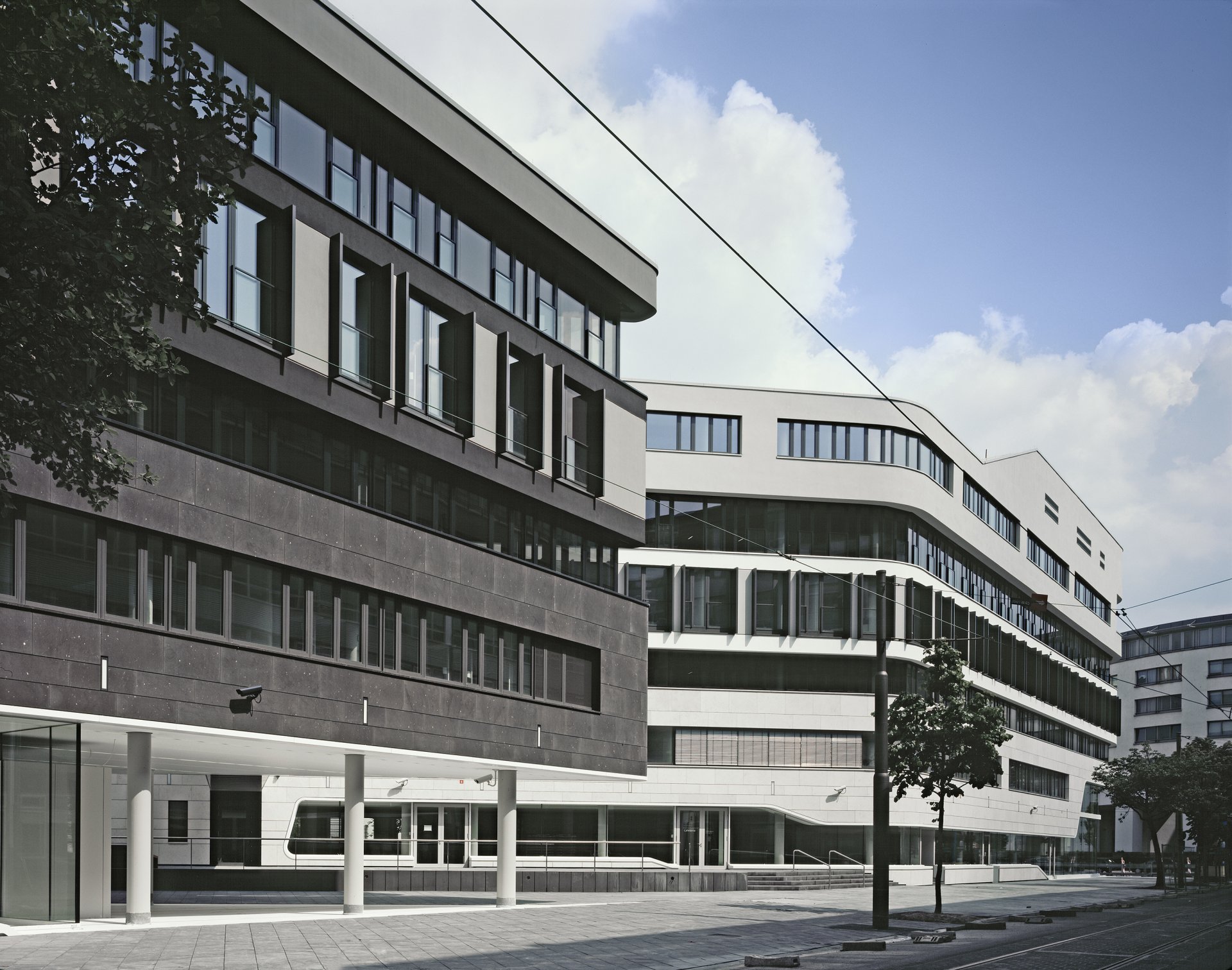
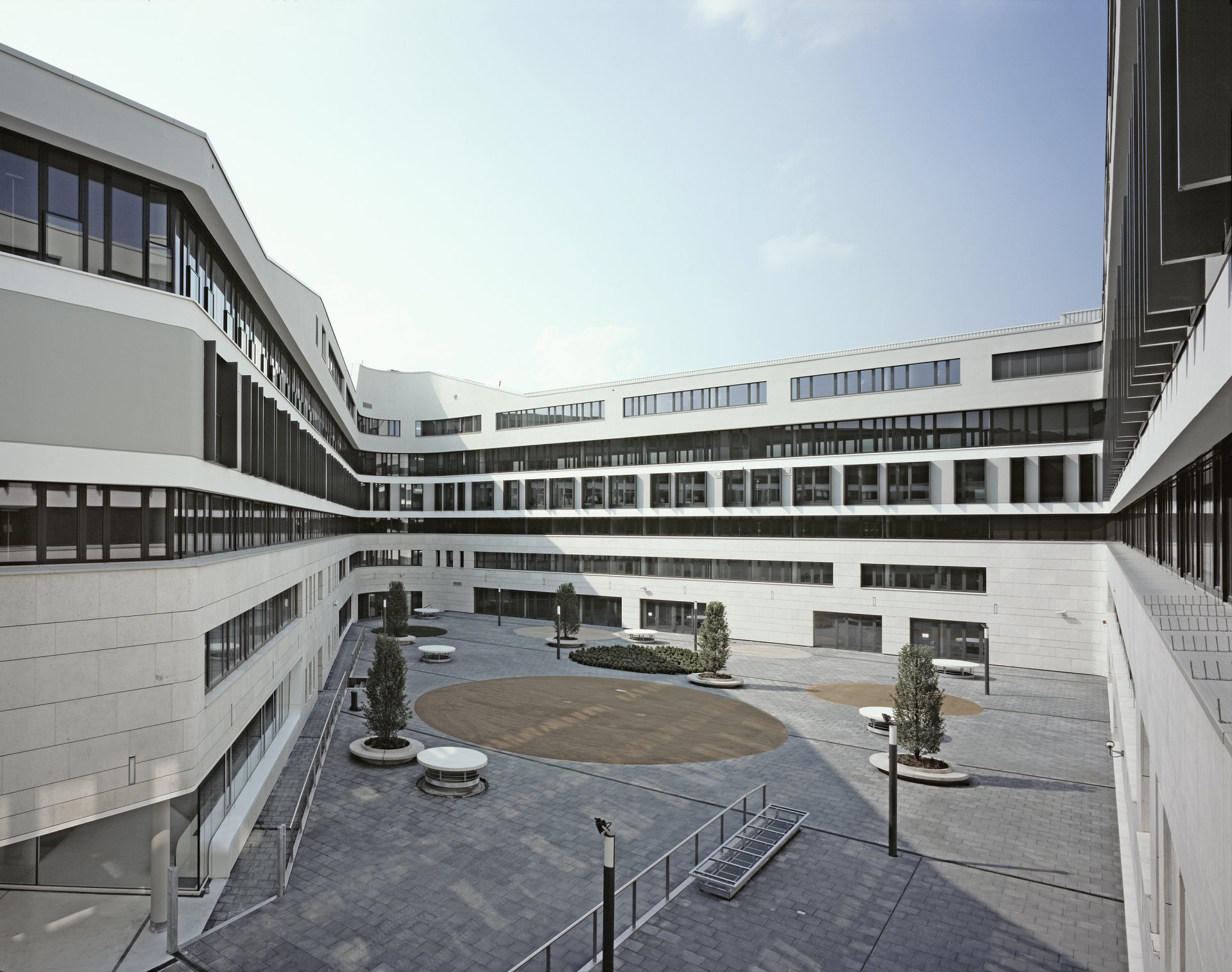
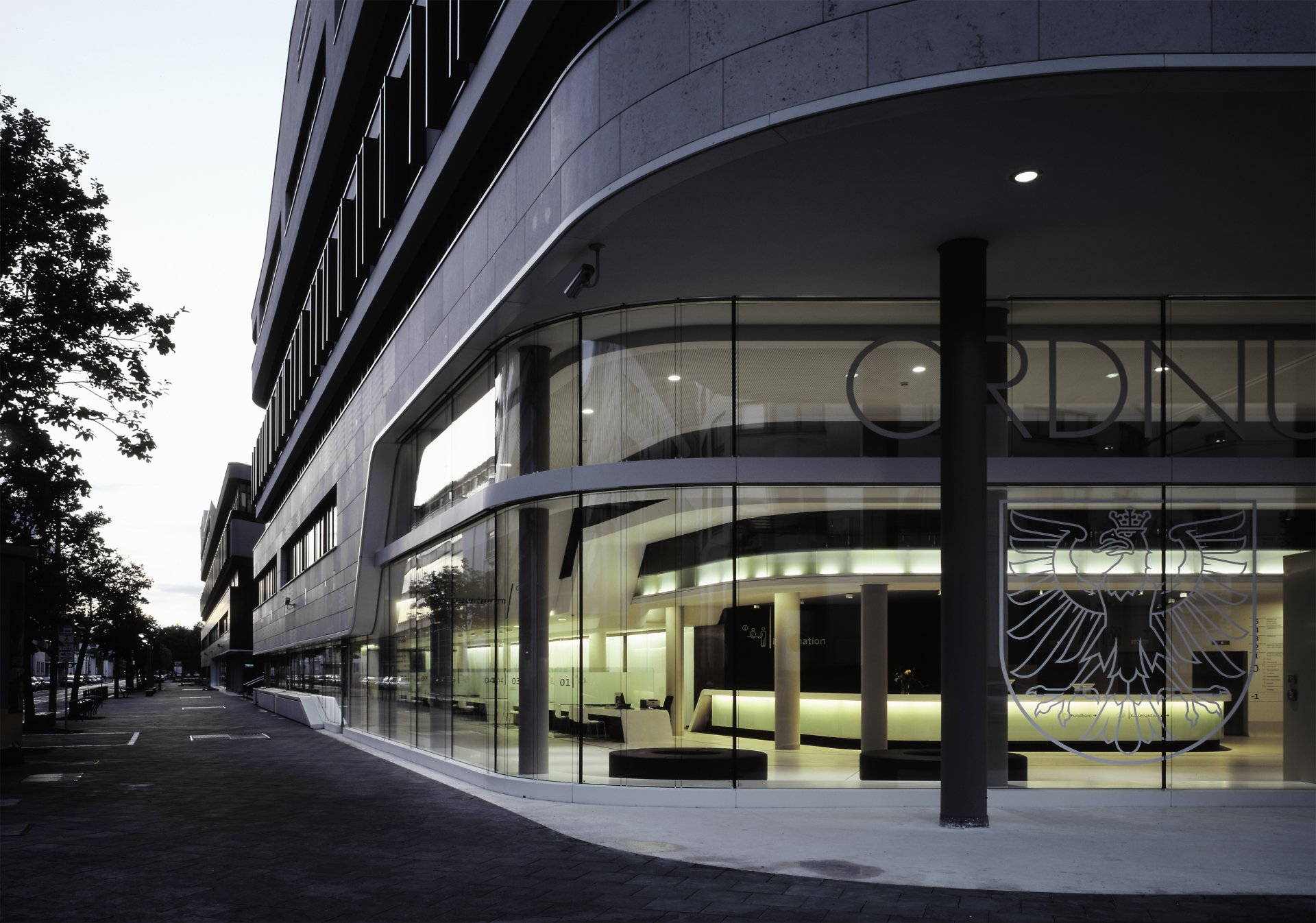

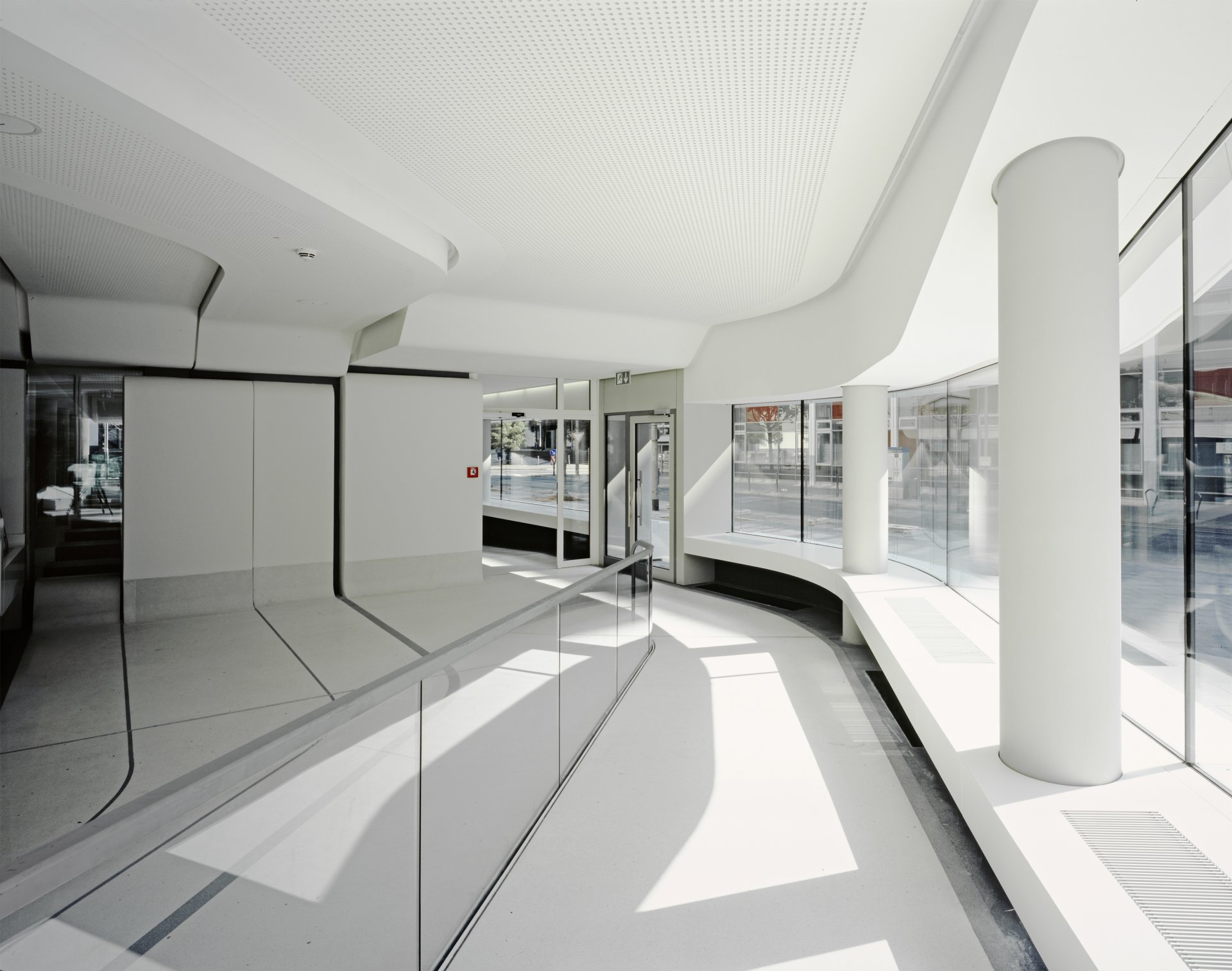
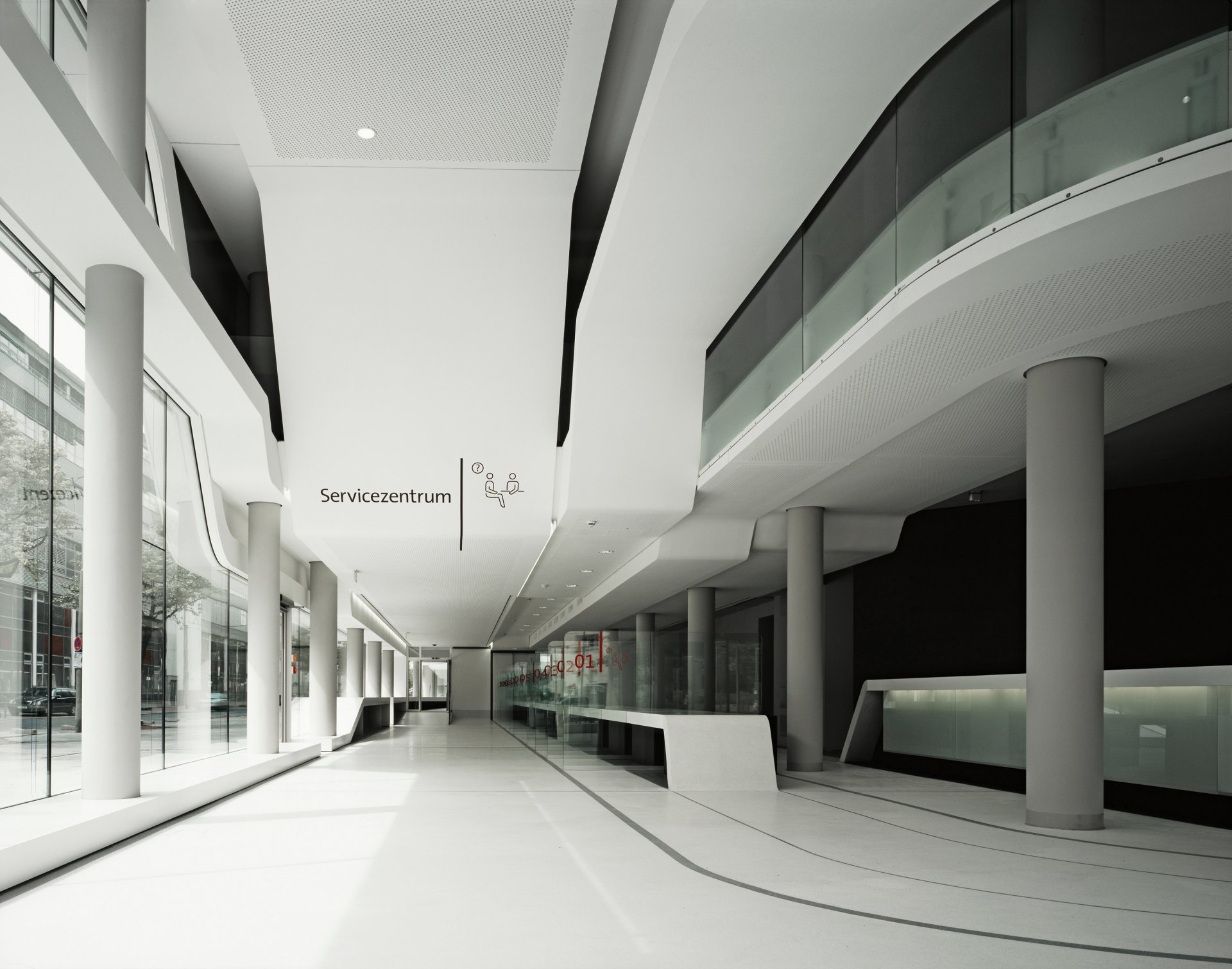
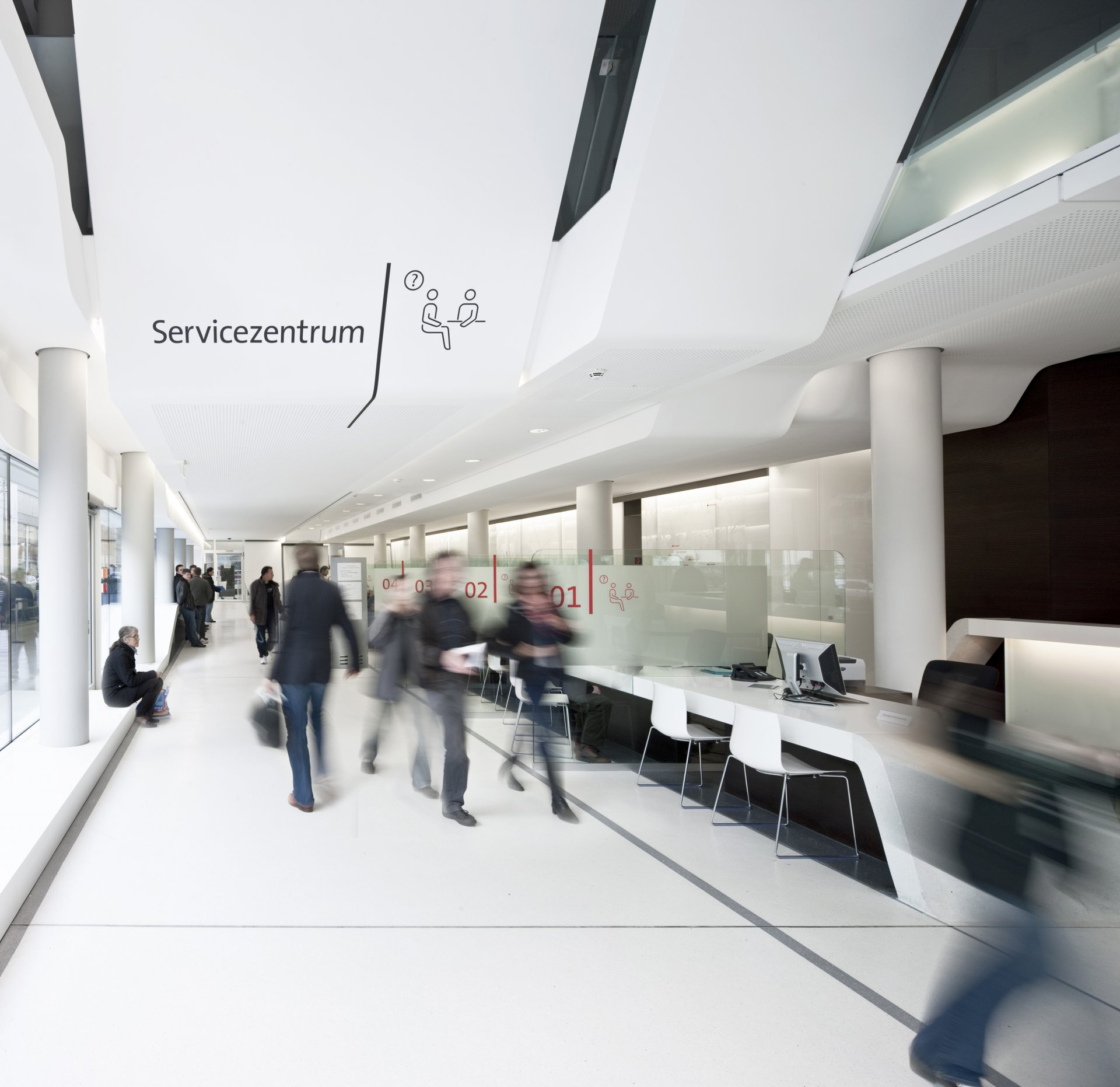
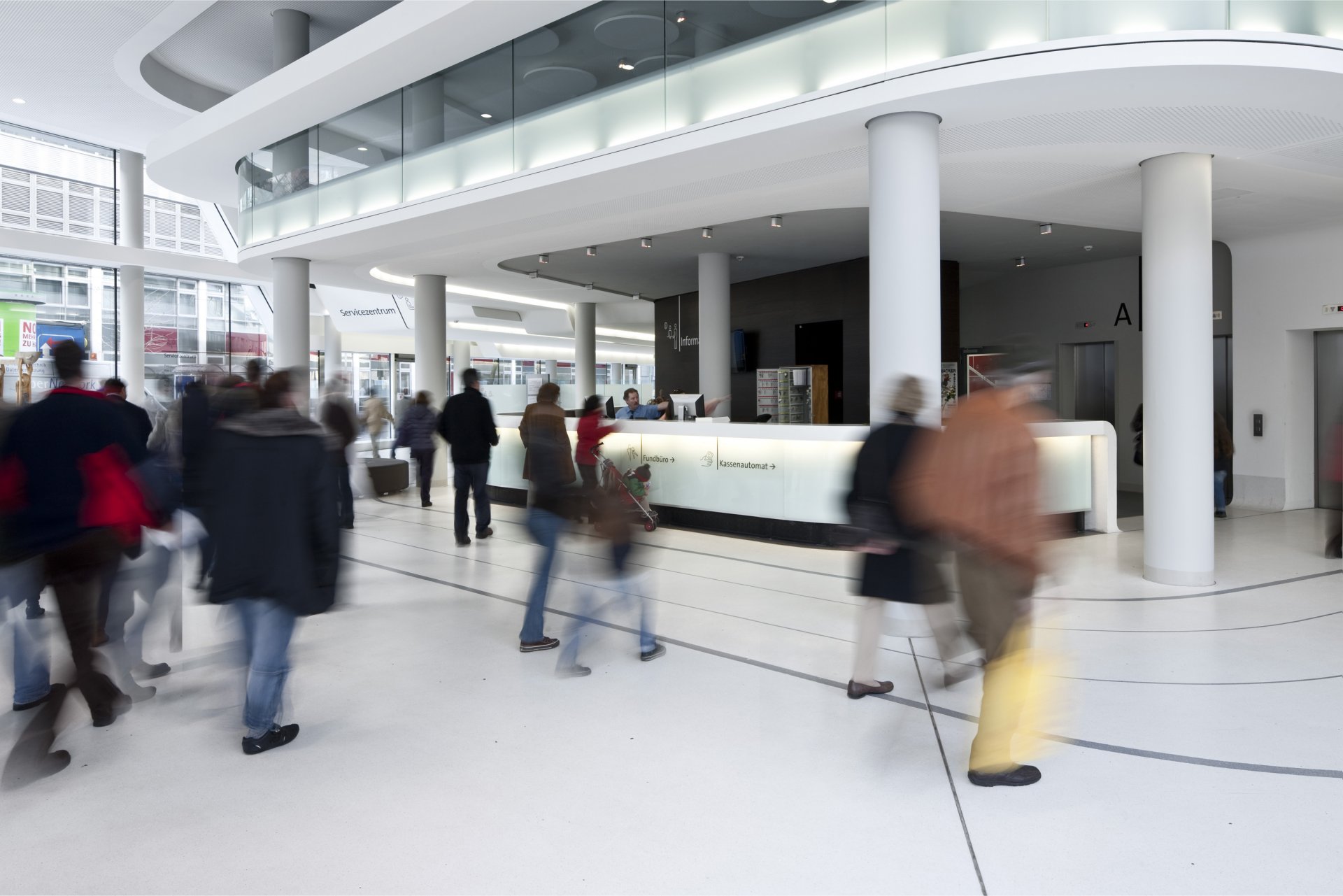
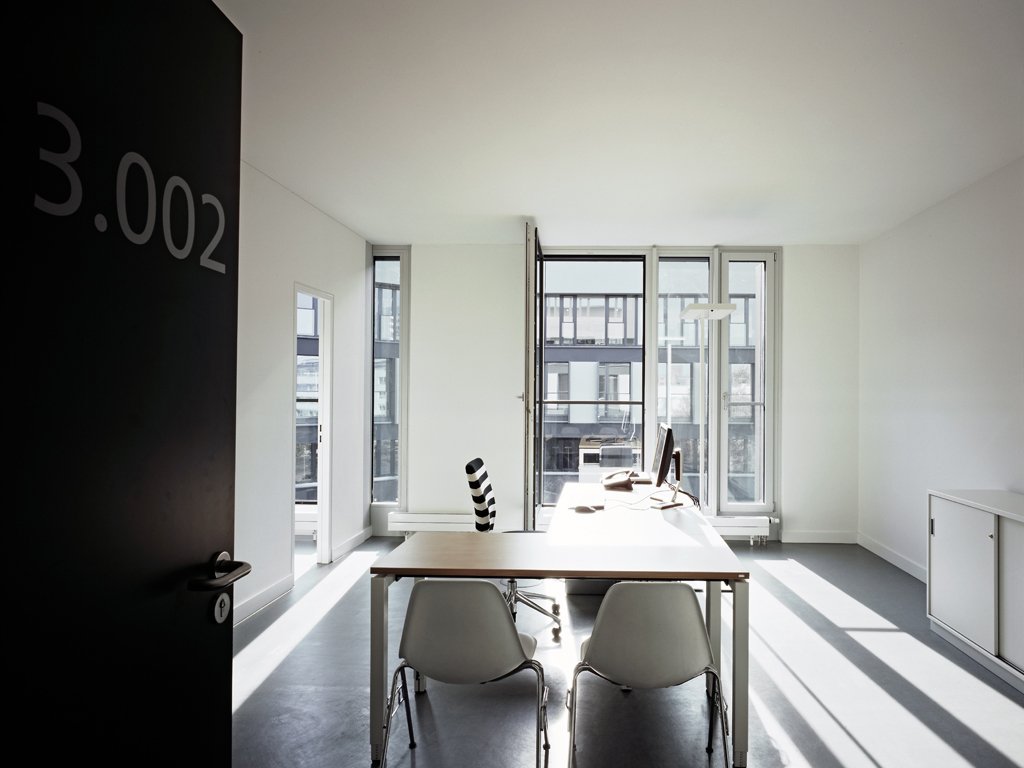
Client
OFB Projektentwicklung GmbH
Team
José Ortells, Nina Kreiter (both project architects), Corinna Bernardy, Stephan Bohlender, Mie Dressler, Asmus von Esebeck, Antje Feenders, Hannes Freising, Martin Goldhammer, Ute Günzel, Daniel Güth, Heike Hüppop, Judith Kaluza, Cordula Keller, Timo Prinzing, Joost Rebske, Volker Rohde, Kay Saßmannshausen, Alexander Streck, Géza Szerdahelyi, Diana Vicari, Zao Yang
Location
Frankfurt am Main
Completion
2009
Gross floor area
38.980 m²
Awards
Knauf Diamant Award 2010
AIT-Award 2012 - Shortlist
Martin-Elsaesser-Plakette 2013
CONCEPTS | METHODS | STRATEGIES
The architectural expression of the buildings we have designed varies immensely. Nonetheless, they are based on an explicit architectural stance and share the same design approach.
1. Conceptual
As we see it, an architect should pay close attention to the actual conditions and allow them to develop fully. The logic of what is real imposes limits on the architect’s ideas, and any subjective thrust to the architecture is reduced to a minimum. After all, finding is more important than inventing. At the same time, it is important to transcend the existing situation intellectually and this ultimately transform it into an architectural design. It follows that our fundamental concern is to bear with the ambivalence between the actual parameters and what they inevitably translate into and come up with something beneficial in the process. To do this you must be capable of seeing precisely what already exists, be fascinated by it, but also let it inspire you to go beyond it if necessary.
This is why our concept entails us working with perceptions, images and associations, combining them with the practical parameters of the respective brief.
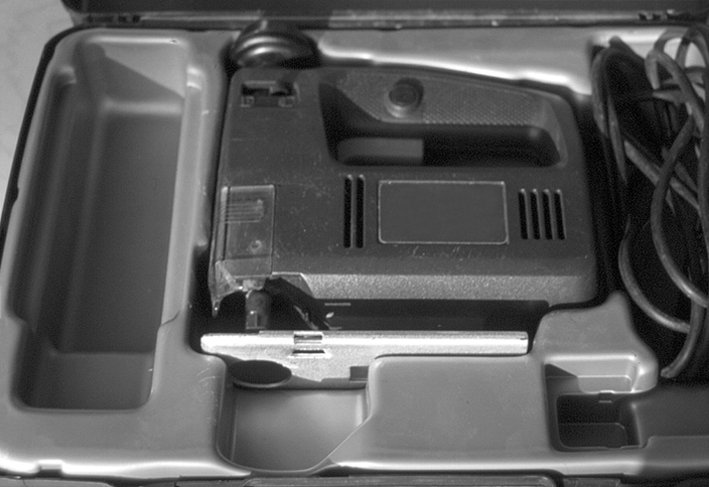
Association object: Jigsaw in case
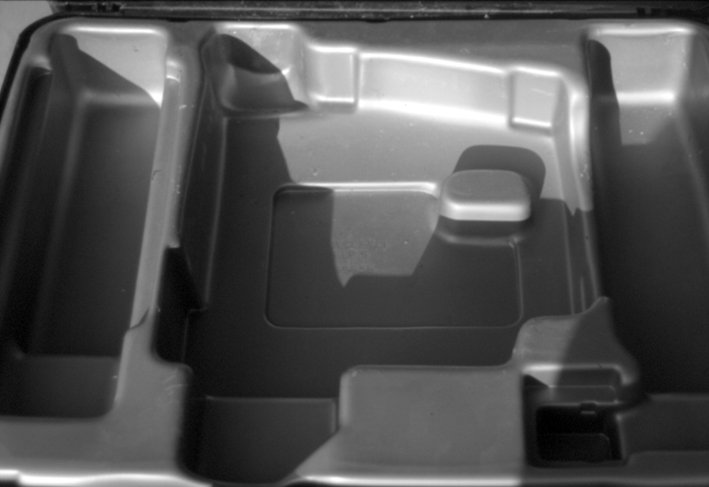
Sheath of the saw case
Design process
We begin each design process by researching and thoroughly analyzing the specific features of a place and the brief. This involves exploring historical, cultural and symbolic layers and teasing out their vibrancy. Based on these insights, we collect all the possible associations that occur to us. Typically, these thoughts are closely bound up with the particular features of the place, existing architecture and brief. They emerge from a precise observation of everyday things, their arrangement and significance. These features might be furnished interiors or the items that generally shape a space, but can equally be existing, urban situations, the historical layers of a building or the history of a place. We then translate these authentic spatial structures and constellations that have developed naturally into model studies with a view to revitalizing the space at our disposal as perceptual space, space for reflection and space for social interaction.
Transformation
In our design process the analysis of the existing circumstances merges with the transformation of existing situations or buildings. Specifically, we rely on intellectual associations and the images derived from them. What at first sight might appear to be a kind of ready-made becomes the basis for a new reality, which neither ignores its position in a given context nor the conditions under which it evolved. This approach also emphatically draws on past building typologies and techniques.
As such, our approach to architecture is based on our essentially seeing everything we do as a transformation or a conversion of existing situations. This is why the buildings we design respond sensitively to their immediate surroundings and urban context. At the same time, they also develop a sculptural impact. We resolve the seeming contradiction this produces by applying specially developed methods that are established practice in the world of contemporary art.
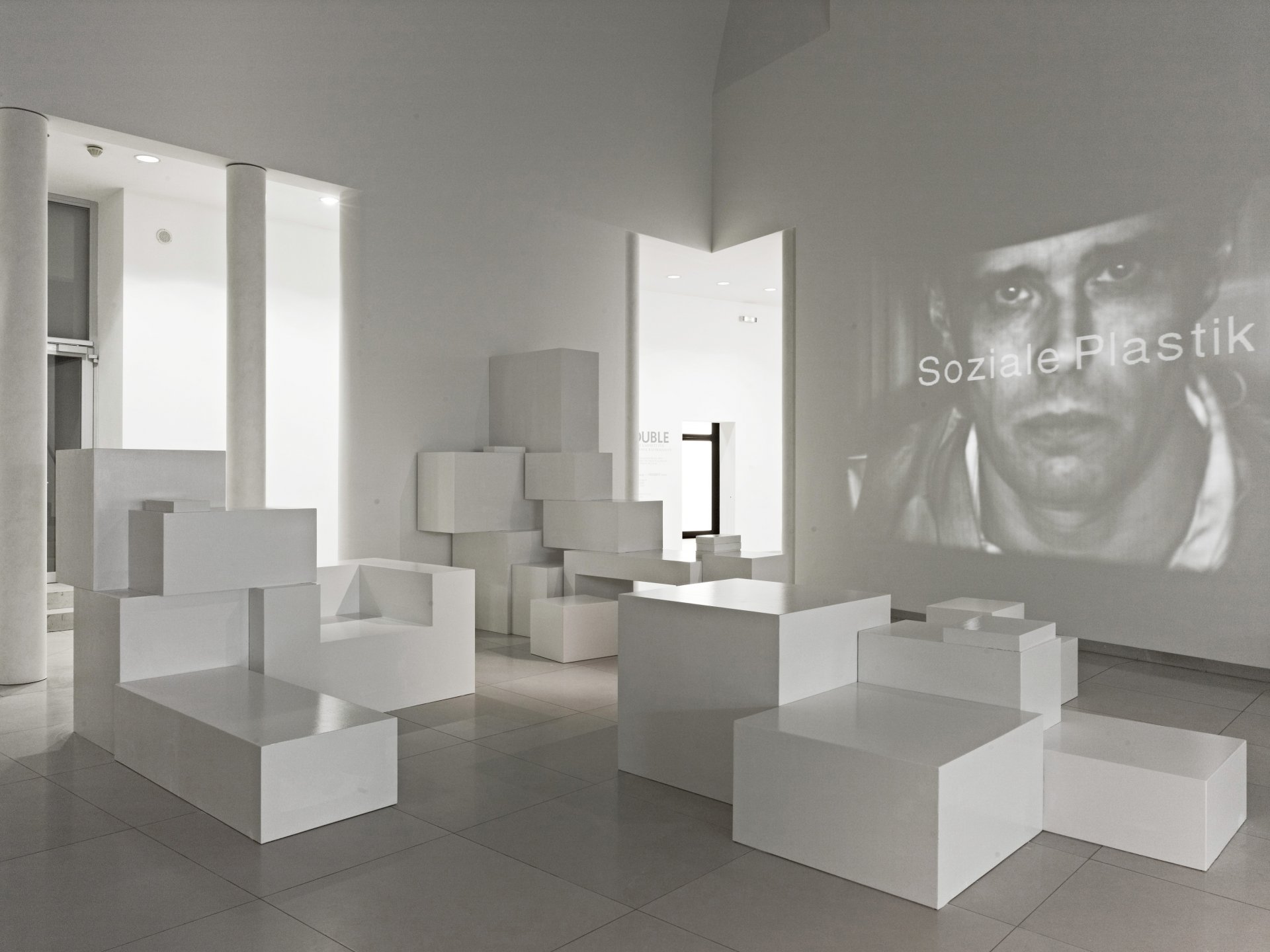
For the project Reading Room at the Museum für Moderne Kunst Frankfurt an abstract version of the study of an “intellectual compulsive hoarder” was created using multiple stacks of books.
2. Operative
Apart from realizing individual projects we also continually develop spatial studies that are not commissioned and in which spaces are played through on varying scales and explored in an exemplary manner.
Drawing on an idea from concept art we employ calculated experimentation with levels of perception and chains of association to kick off the design process; a method that produces solutions which might seem natural but are also surprising.
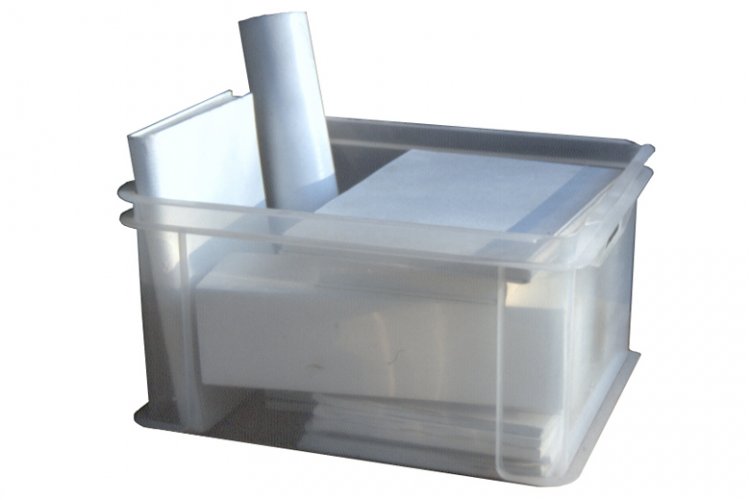
A filled box as starting point for a steel sculpture
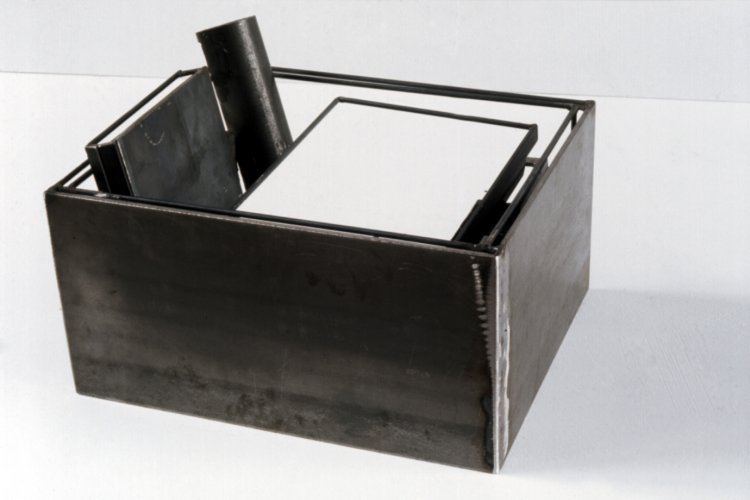
Front view of the steel sculpture. The full box is easily recognizable.
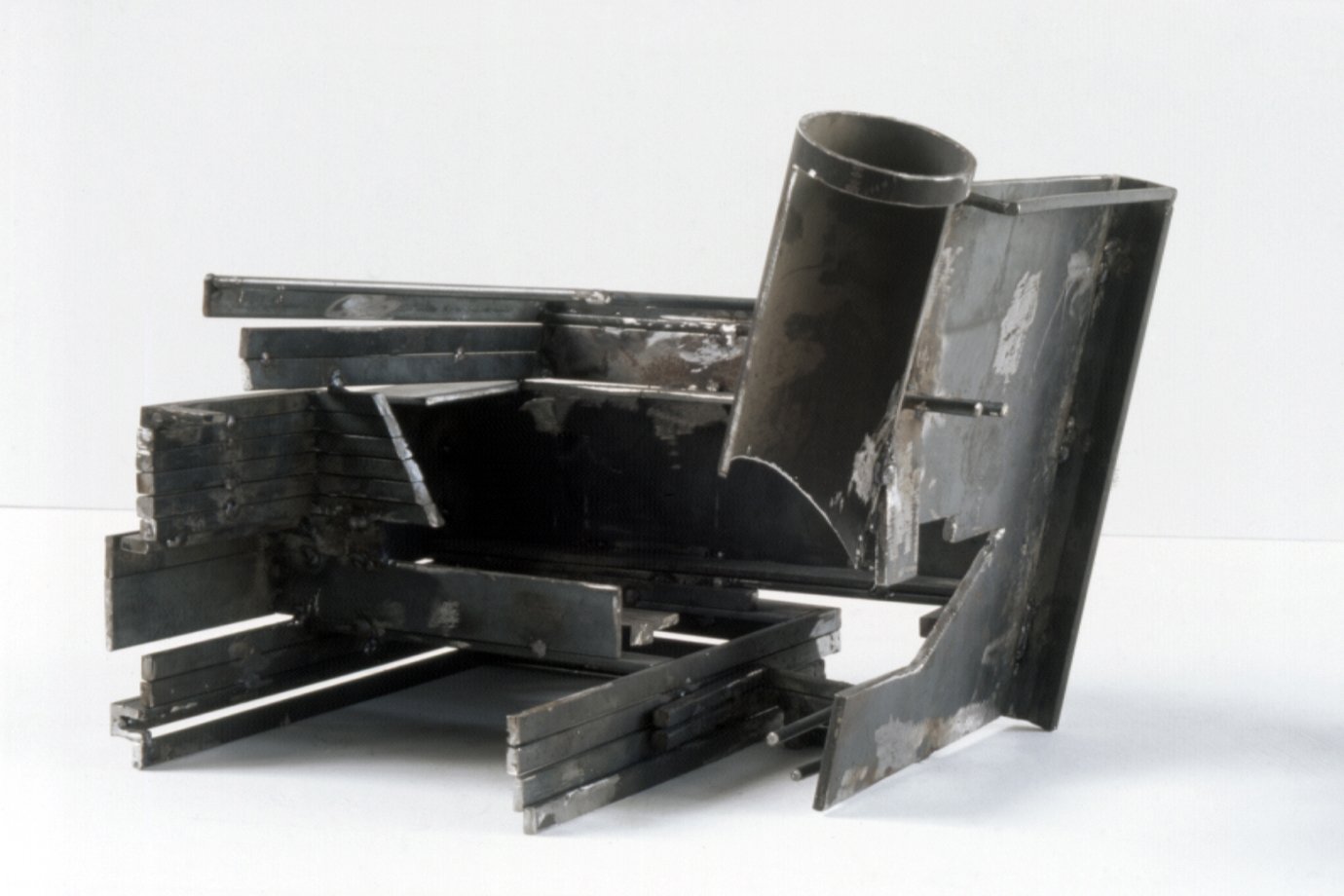
From behind, the steel sculpture reveals a totally different, abstract form.
Things suffused with human experiences, spatial and urban constellations are transformed graphically, sculpturally and architecturally.
Whether designing a new building or converting an existing one we place the focus firmly on perception – particularly regarding the ambivalence of mass and space, concreteness and abstraction. Existing buildings and constellations are infused with diverse social experiences that trigger specific associations. By identifying and analyzing their complex significance vibrant uses and means of social interaction in real space emerge. This creates a new view of places, buildings and things that in turn stimulates new ways of combining various images, atmospheres and uses.
We also engage in our own spatial studies – and have elaborated them over the years. They focus on examining and exploring examples of urban and urban planning concepts, spatial structures, building typology structures as well as artistic issues.
3. Exemplary
Spatial studies and projects
Over the years we have developed the following spatial concepts drawing on the methods described earlier. Through a series of sculptures, model studies and drawings we have examined how spatial concepts can be developed and realized not only considering the relationship between line, surface and space, but also between drawing and sculpture, representationalism and abstraction.
Steel sculptures
The steel sculptures by Florian Schlüter are conceived as walk-through drawings transposed into the realm of the three-dimensional. They revolve around the ambivalence between concepts such as mass and space, concreteness and abstraction and are aimed at exploring the authenticity of the everyday. These inconsistencies become integrated into later architecture projects as fundamental aspects of them.
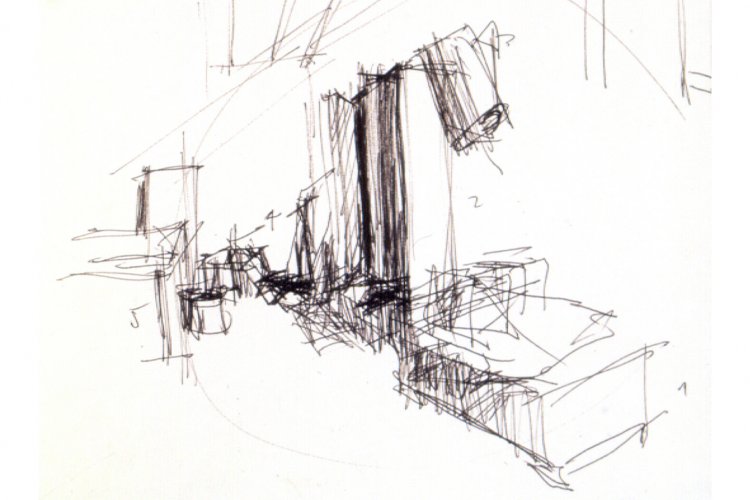
Steel sculpture "Room 01", sketch
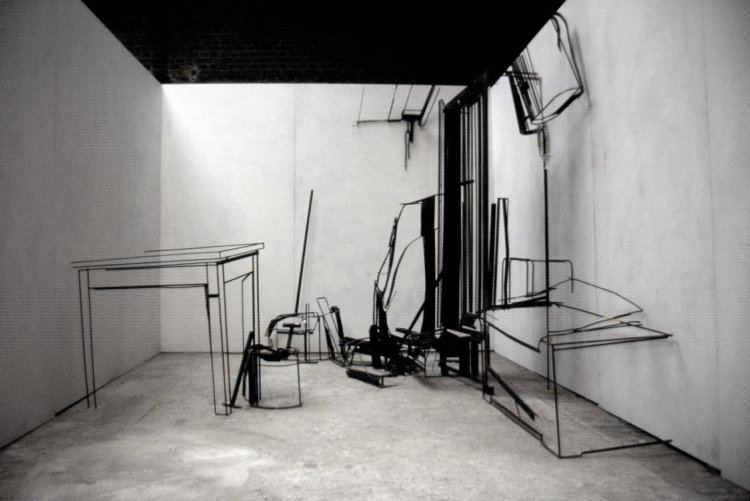
Steel sculpture "Room 01", front view
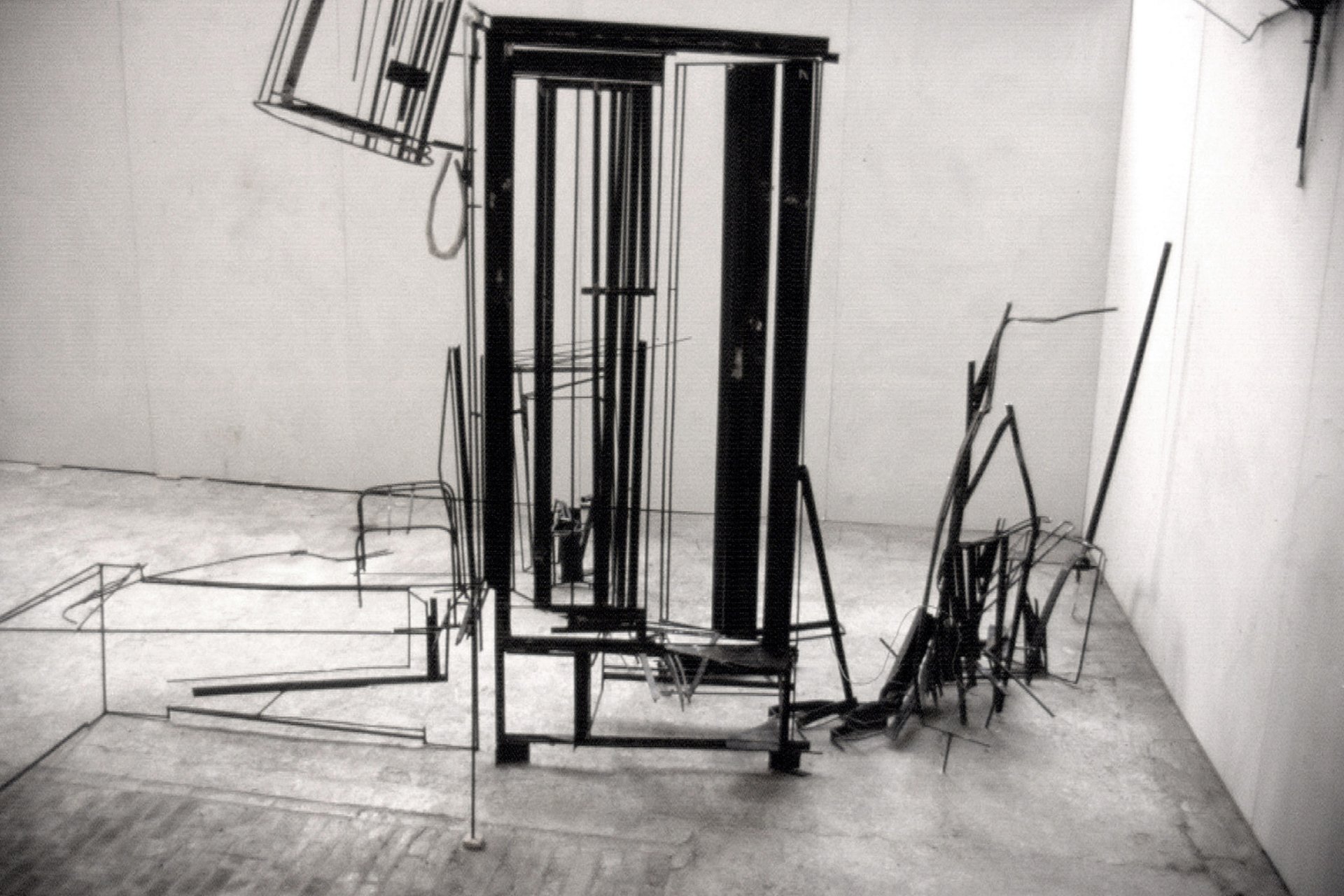
Steel sculpture "Room 01", side view
Studies of urban space
In various studies of urban space, Claudia Meixner employs drawings, paintings and models to penetrate the relationship between mass and space, space as a complement of mass and space, mass and intervening space. Her starting points are both abstract but also specific urban constellations whose given sensual and material design become the point of departure for a transformation that can culminate in a new take on reality.
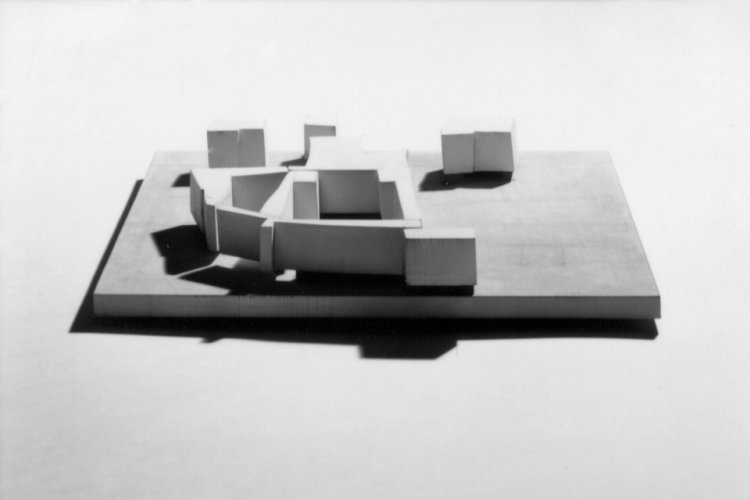
Study of urban space 01
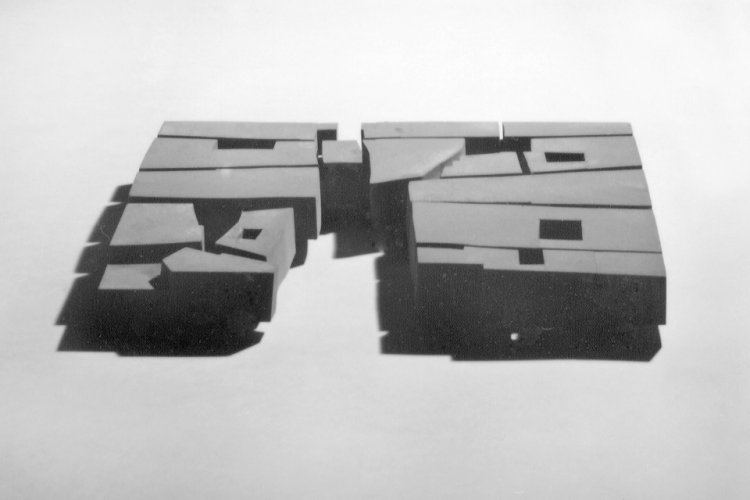
Study of urban space 02
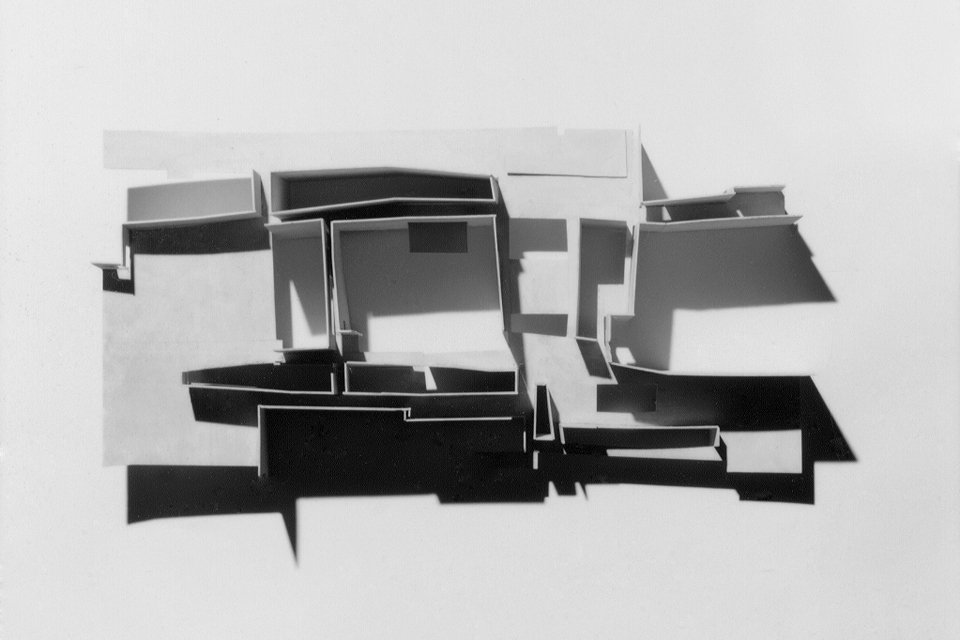
Study of urban space 03
Building prototypes
Moreover, a series of model studies and installations are used to realize potential buildings. Complex spatial concepts are developed through addressing issues on the relationship between shell and core, the importance and function of interstices and elements in space.
Here furniture or furnishing elements in interiors are taken as the starting point. In this model study the constellations that have become usual in everyday life correspond with individual walk-through spaces in a large surrounding space. It is possible to experience the elements and their relationship to the overall space as well as the relationship between the intermediate space and the space as a whole.
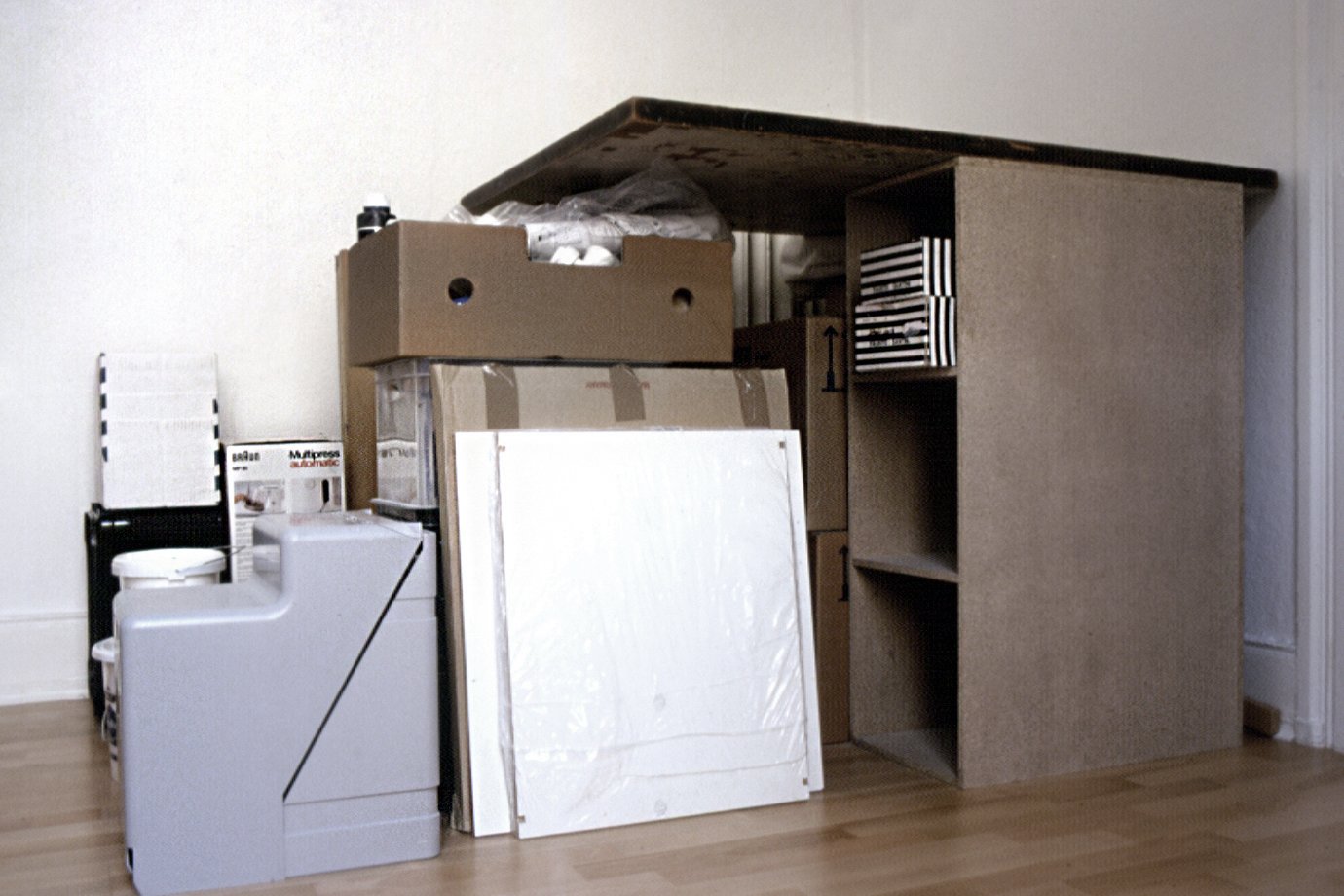
Various objects and arbitrarily stacked boxes as a starting point
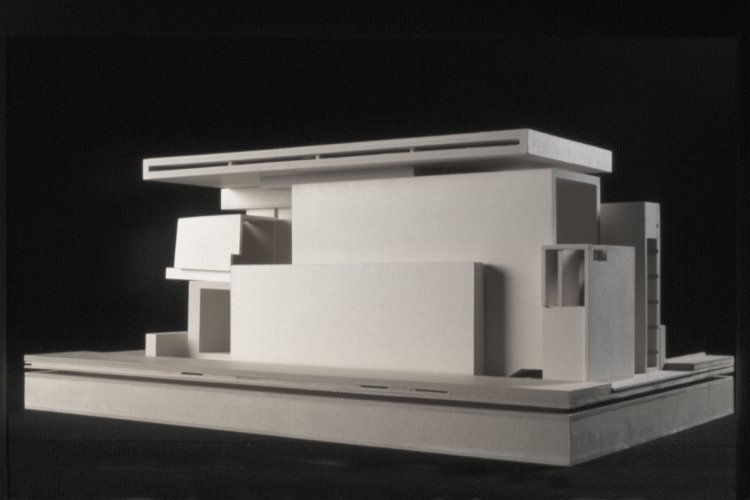
Model of accumulation/stacking
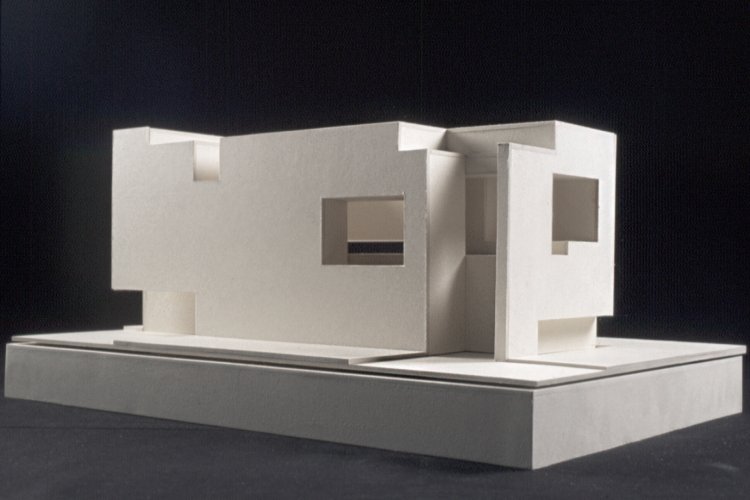
Model intermediate space
In a first model study the starting point was the seemingly chance accumulation and stacking of things. The individual elements in the model represent interior spaces that can be walked through and form intermediate space.
The point of departure for another model study is the shaping and selective filling of intermediate spaces through a stacking and layering of various objects in the space. The relationship between positive and negative is reversed, while that of the volume and mass is redefined. The intermediate space becomes walk-through mass.
Exemplary projects
In addition to the afore-mentioned conceptual parameters, when realizing projects the practical parameters of relevance to the architecture also come into play and influence the substantive concept.
A whole raft of structural means contribute to the success of a sculptural edifice that expresses tranquility and agitation, gravity and lightness, stability and instability, depending on the overall concept.
Expo pavilion
In designing a pavilion for Expo 2000 the starting point was the geometry of a “simple house” with a saddle roof, a single interior space and several “items of furniture”. By enlarging it ten-fold the things morph into archetypal symbols. Perception per se is addressed and a new perception of the architectural space and the objects in it is created. Depending on the viewer’s angle the house, interior space and garden appear either symbolic, concrete or abstract.
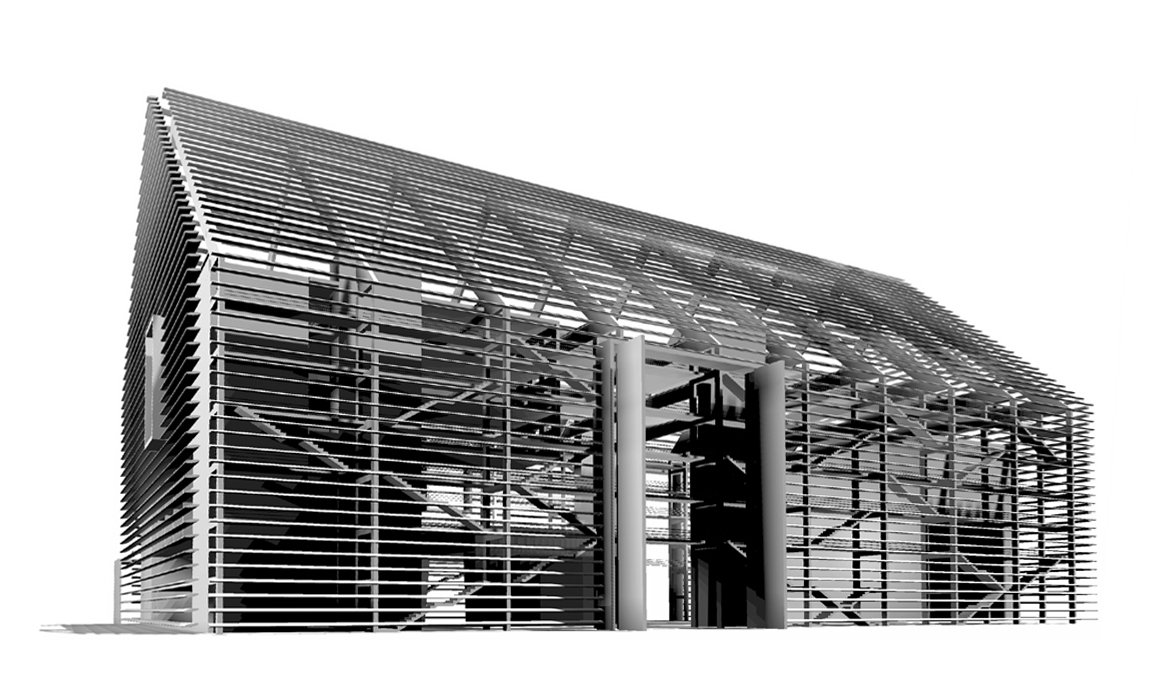
Rendering of the Expo 2000 pavilion
Wohlfahrt-Laymann House
The concept for transforming this residential building developed from the necessity to extend and structurally improve an archetypal house. A new sheath was created that encompasses the entire house. Diverse spatial constellations were produced within the cubic sheath architecture that experiment with the relationship between interior and exterior spaces and the intermediate spaces created as a result.
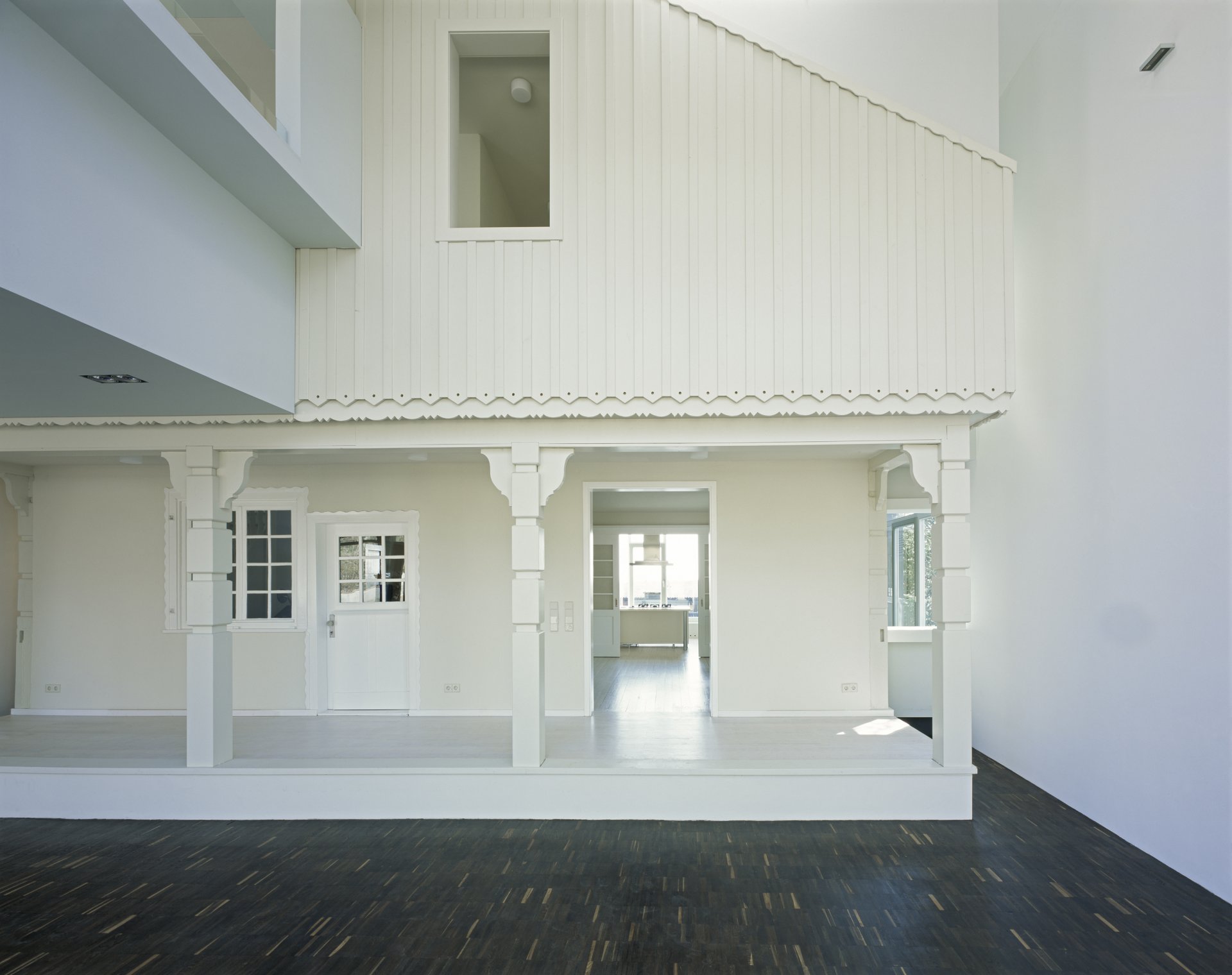
View from the new living room of the old outer facade
Artemide
As part of a project for Artemide, the shapes of several of the manufacturer’s luminaires were regarded as ready-mades, reduced to their essential components, merged with one another and cut out of a compact mass as a negative form. Through the play of light and shadow the resulting polyvalent volume produces a special spatial atmosphere and triggers diverse associations.
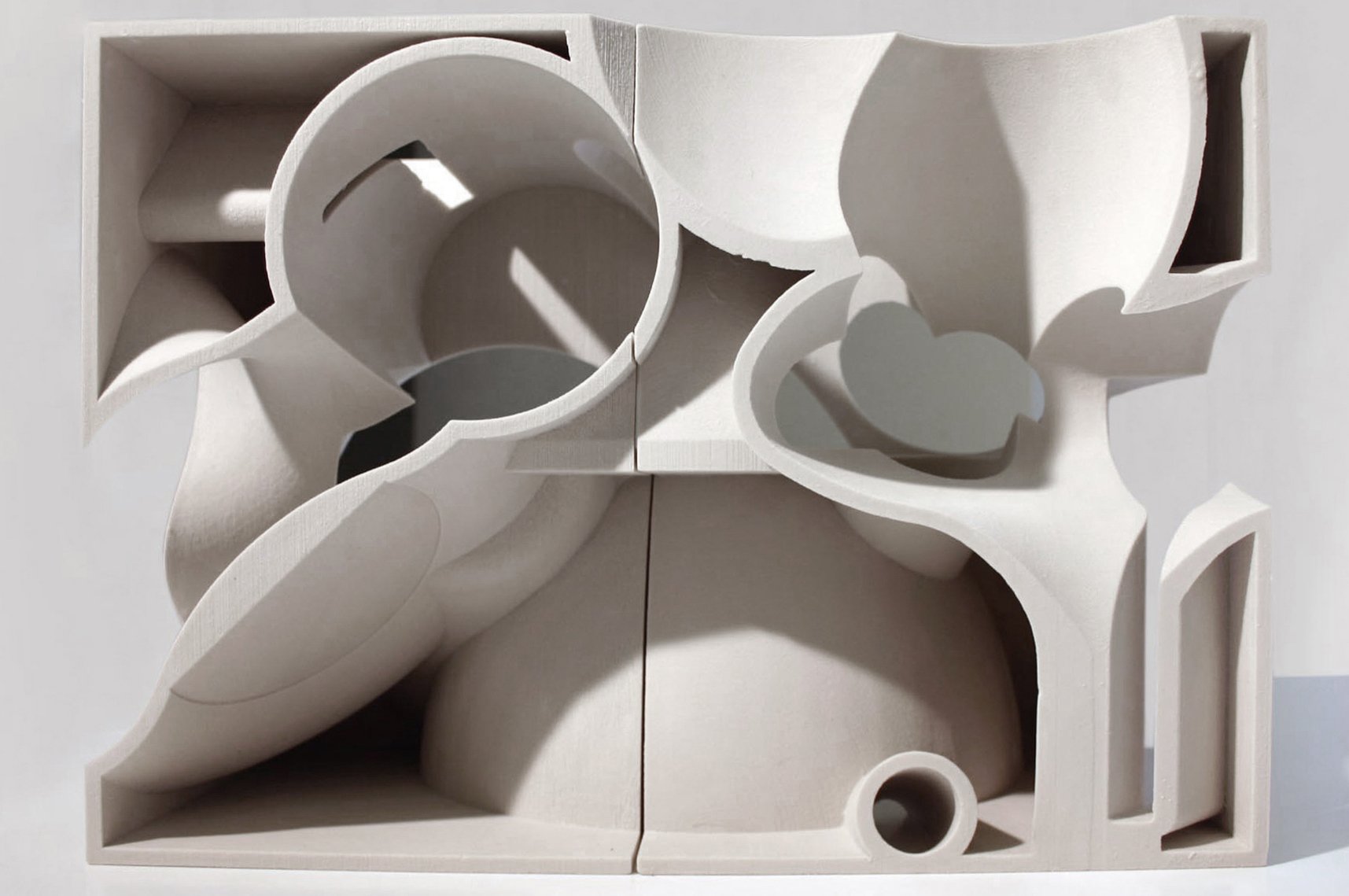
Section of the 3d-printed form
Dornbusch Church
The special nature of the place and the reduction process is made evident in the partial dismantling and conversion of the Dornbusch Church. A new wall marked with indents and molds of the old church and elements that had been removed were used to form a sculpted structure. What is absent remains present in these molds. The perception of area and space is activated and the recollection of its earlier state reinforced.
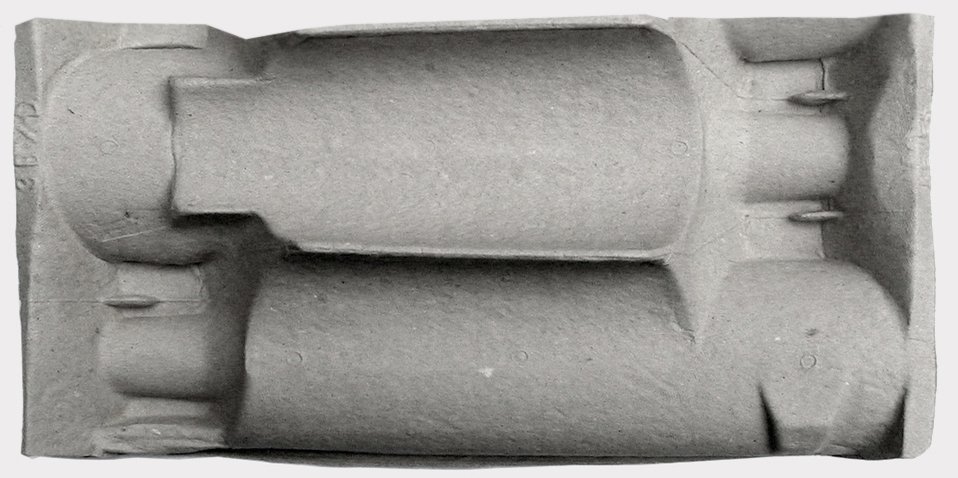
Ausgangspunkt Weinkarton
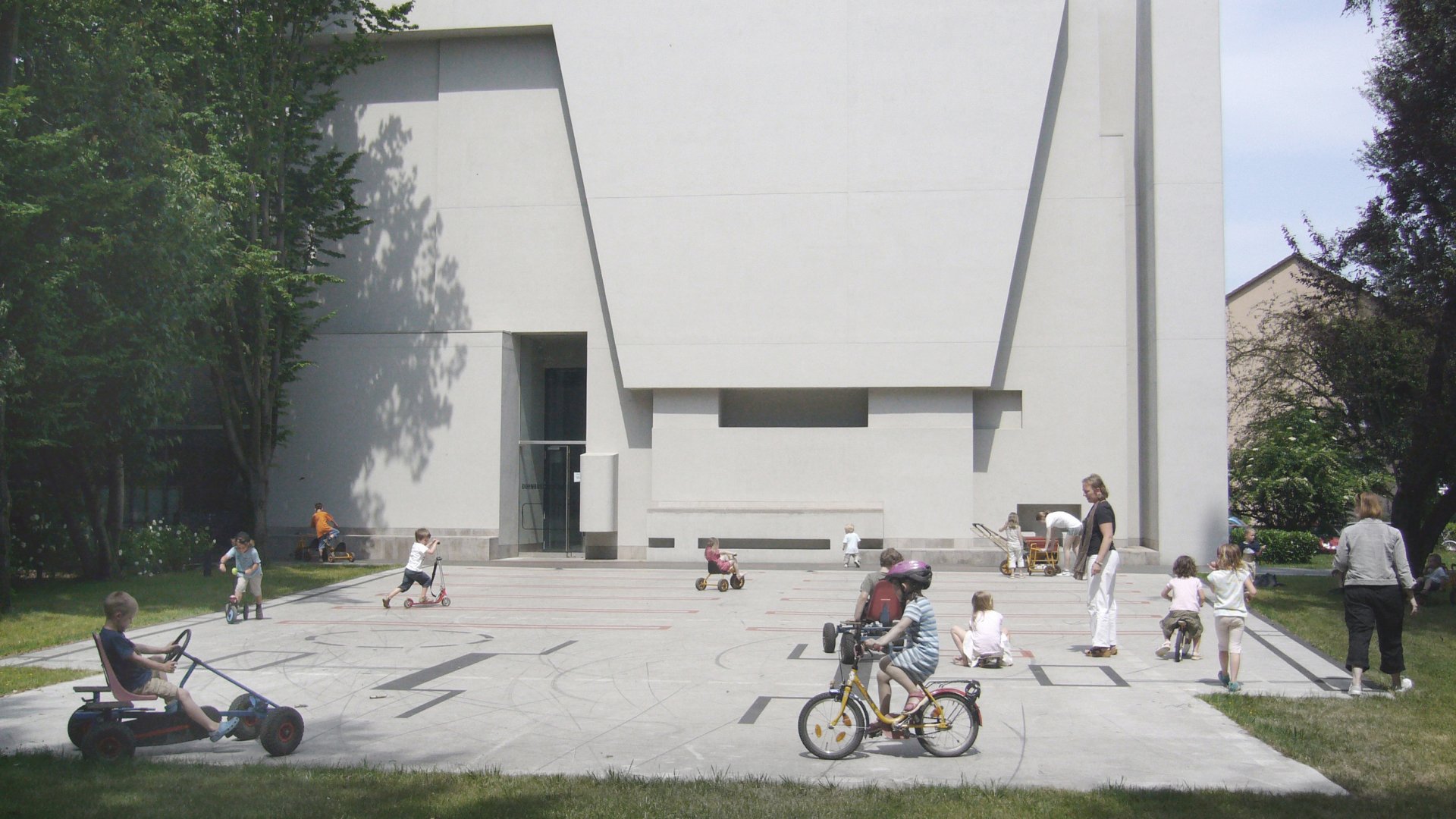
The partly dismantled Dornbusch Church with relief wall and new plaza
In architecture as we understand it everything is basically transformation. We see our task as controlling the ambivalences that emerge during a transformation of an existing structure. This is not only easy on physical resources, but also revitalizes sensual, intellectual and ultimately cultural resources.